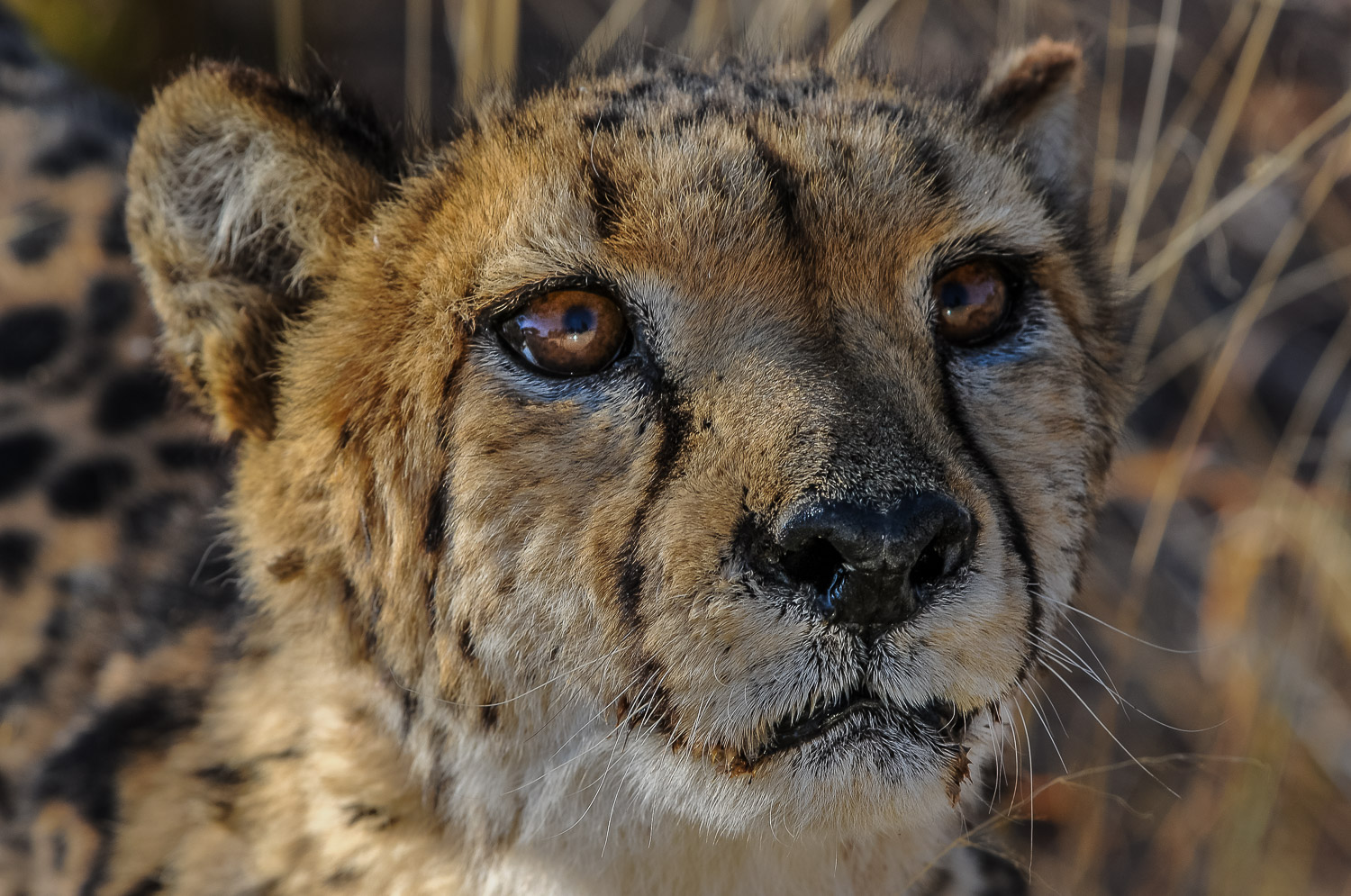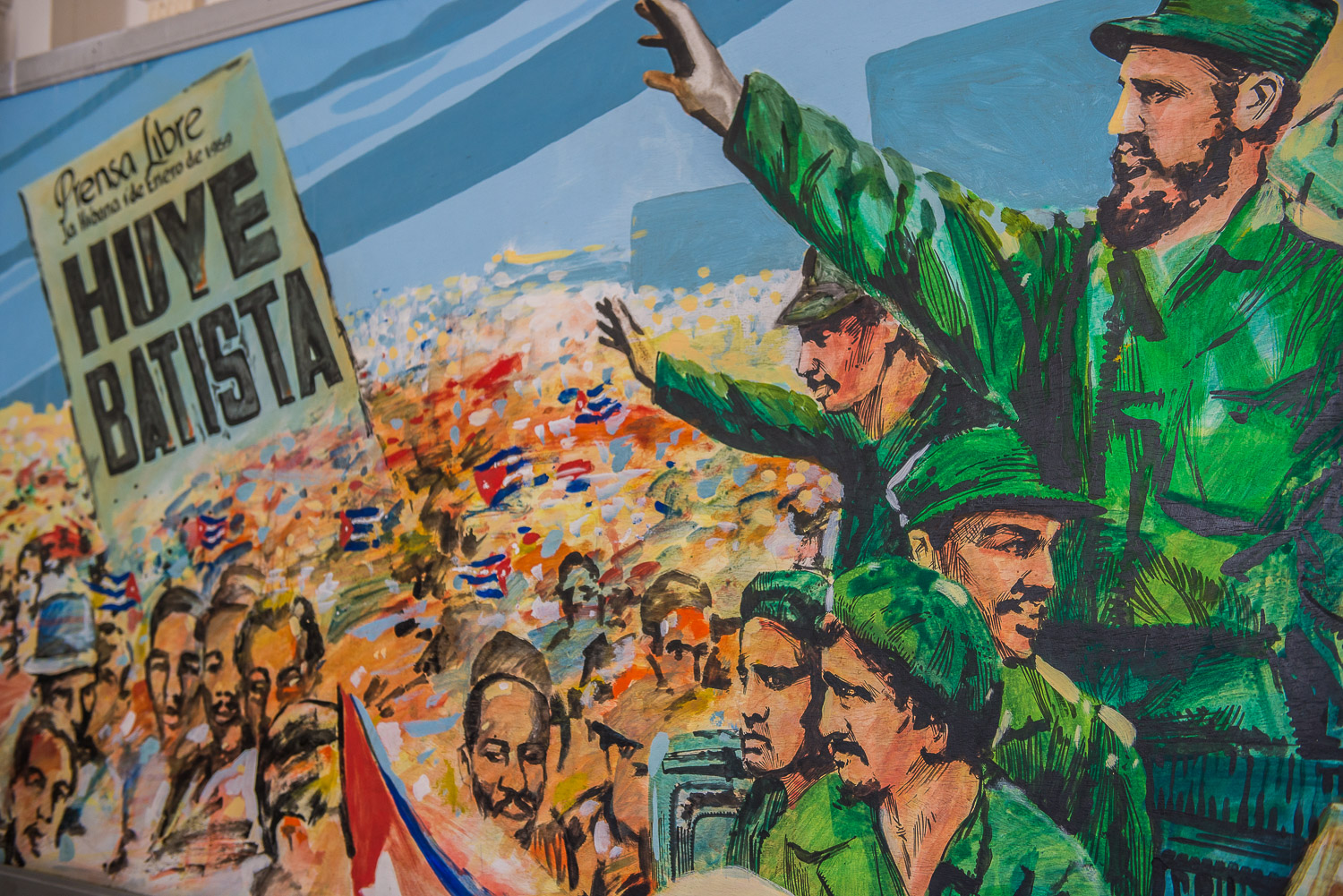Tiger Tales – 2011
Yadunath Sen spoke only one word of English. And that was “tiger”.
And when he calmly, but softly, said “tiger” and pointed with his left arm into the distant bush he had our complete attention.
We were in Bandhavgarh National Park in India. It was our fifth – and last – safari in two national parks searching for the elusive and endangered tiger. And our luck appeared to have run out.
At that time there were only about 3,000 tigers left in the wild and they had completely eluded us. One hundred years ago there were 40,000.
But early one August morning our Toyota Land Cruiser eased to a halt at Sen’s command and there, 400 yards from us, was a magnificent 275 pound tiger, camouflaged by trees and bushes. It was slinking behind some tree stumps, and slowly walked through long grass into the open where it stood, yawning, for a few brief seconds before heading back for cover. Our driver estimated it to be about 18 months old.
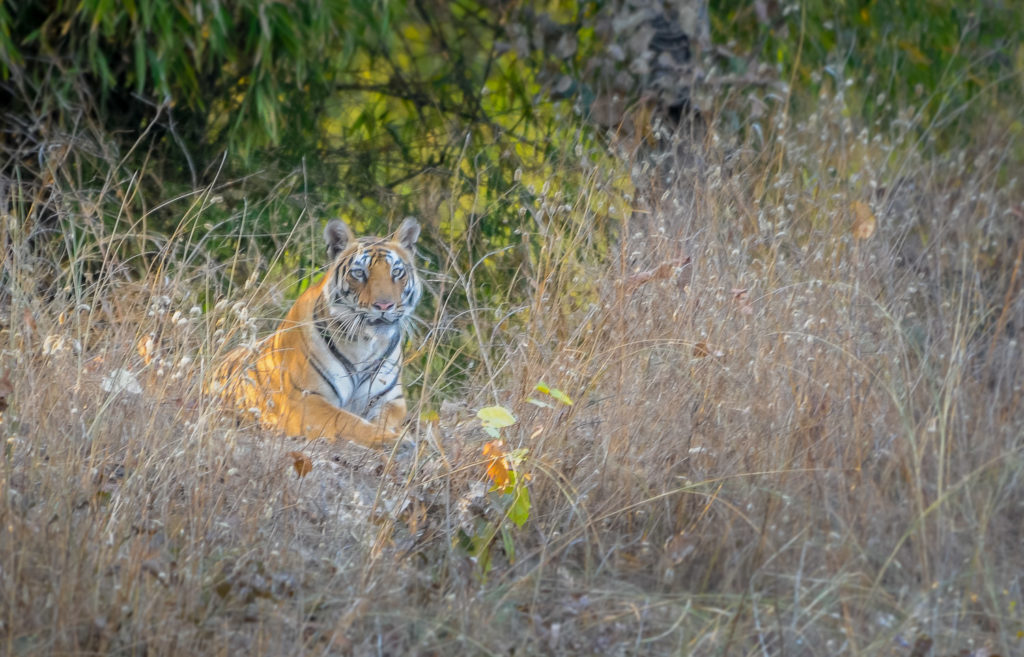
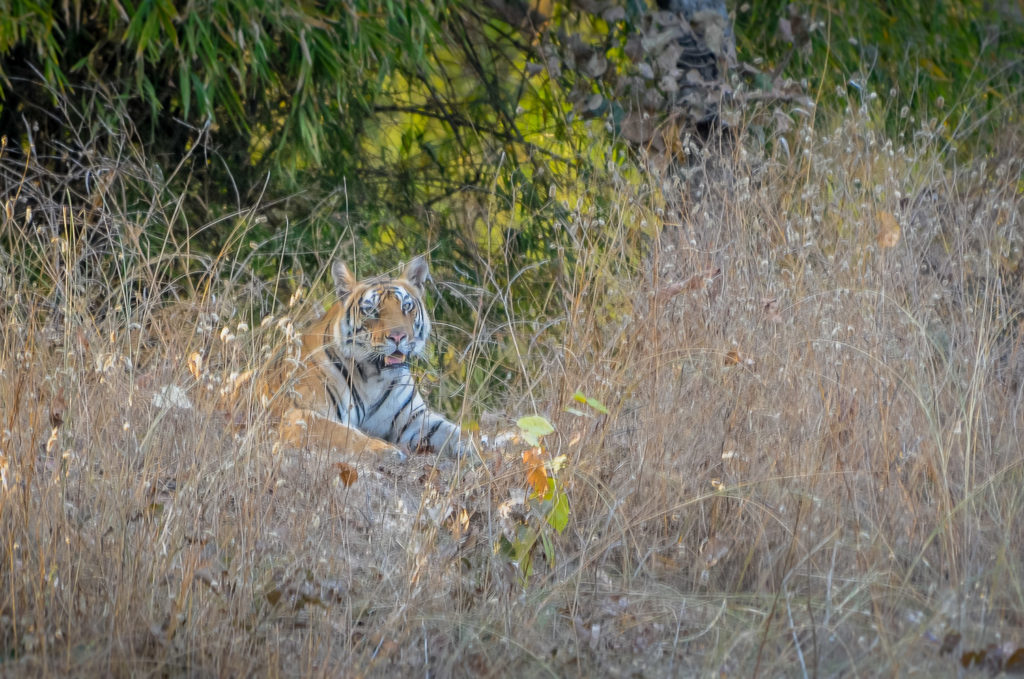
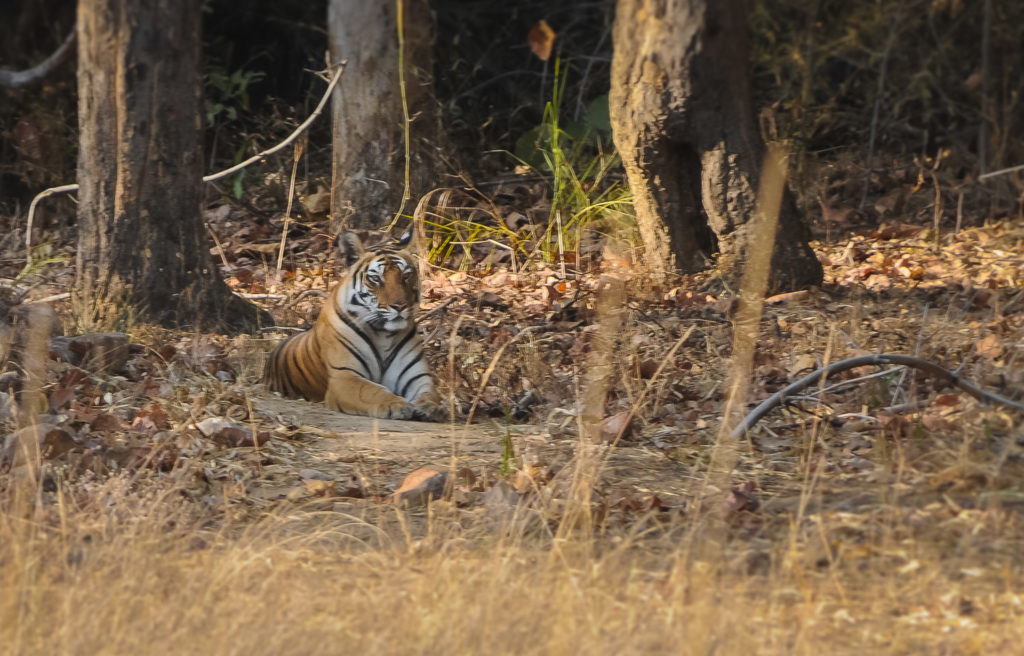
The total sighting lasted maybe five minutes, but it had made our Indian adventure. We always knew the odds were stacked against seeing a tiger but it was an exhilarating thrill.
We were in the tiger parks half way through a six week adventure which started in Nepal and ended in Israel.
We flew to from Vancouver to Delhi, via London, and then on to Kathmandu, 4,600 feet up in the Himalayan foothills. It was quite a culture shock as we touched down – a city of beautiful chaos.
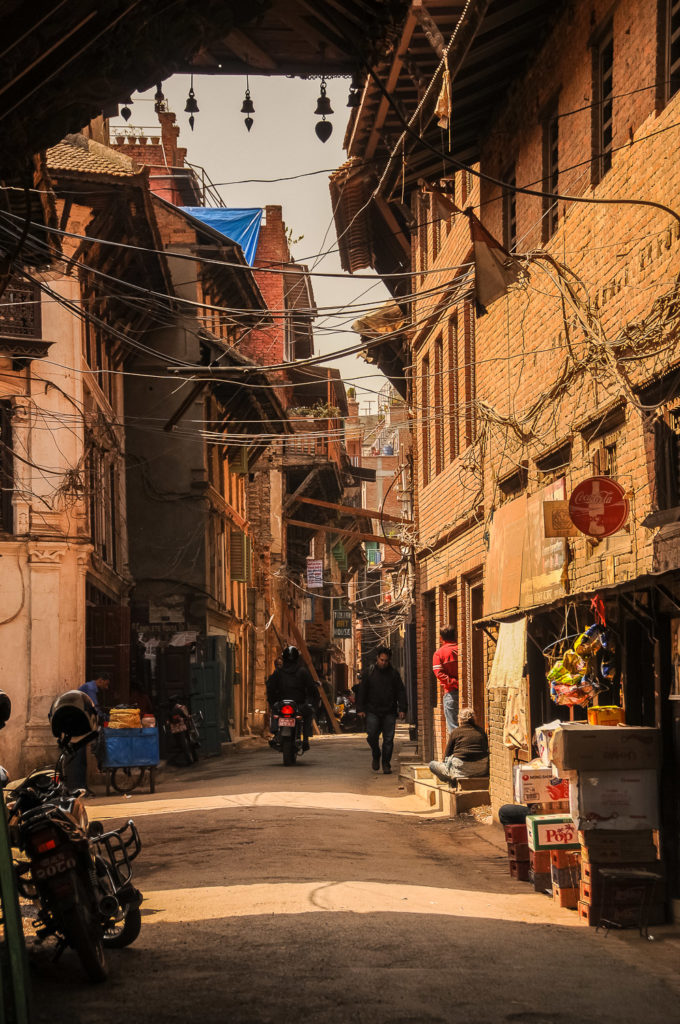
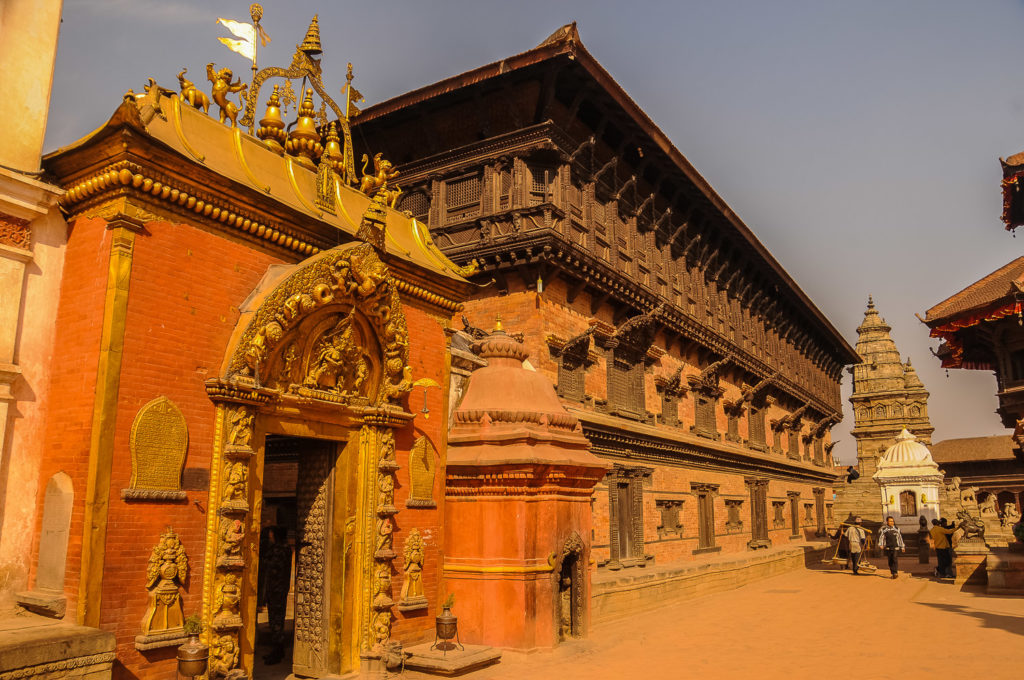
You are immediately drawn into the cacophony of sound from honking cars and motorcycles racing through the narrow streets of the city with its six million people, living in precarious wooden buildings. We were there several years before the catastrophic earthquake of April, 2015, and could easily understand how vulnerable the city was.
Kathmandu was the royal capital of the kingdom of Nepal and is packed full of history, palaces and temples. One of its gems is Durbar Square – a place of palaces – which has more than 50 temples dating back to the 12th Century.
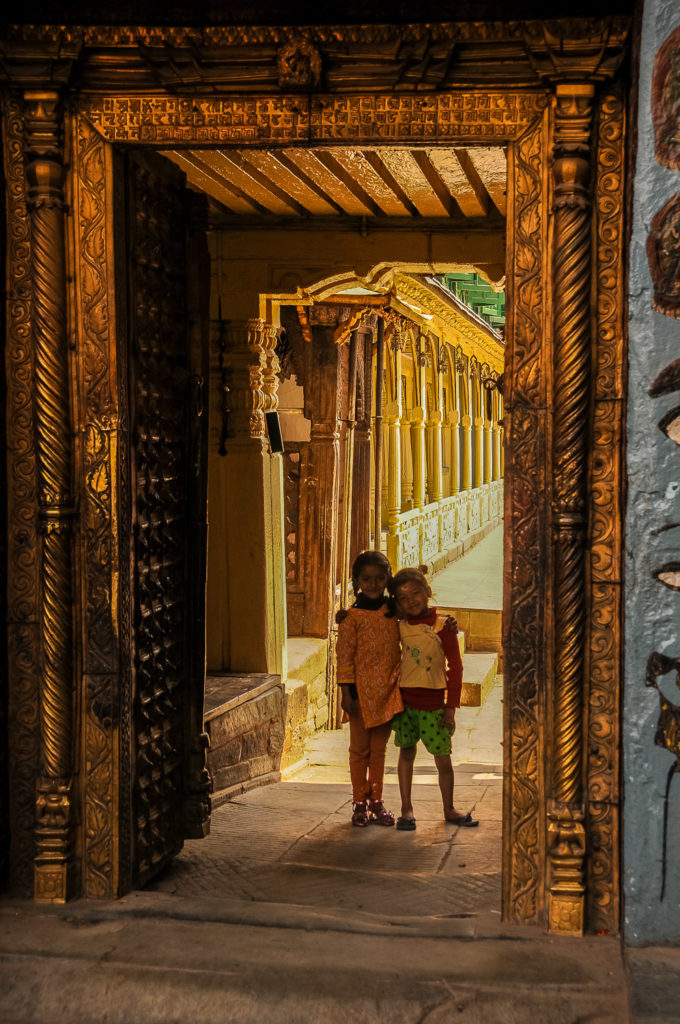
Our favourite was the Boudhanath Stupa – a UNESCO world heritage site, and the largest temple in the country. It is the religious centre of Nepal’s Tibetan/Buddhist community. Monks and pilgrims walk around the stupa, always in a clockwise direction, spinning prayer wheels, chanting and praying. Thousands of colourful prayer flags are hoisted from the top of the stupa downwards and dot the perimeter of the complex. It was hard not to be moved. And eighteen months after the earthquake, with private donations from Buddhist groups and help from local volunteers, it has been fully restored.

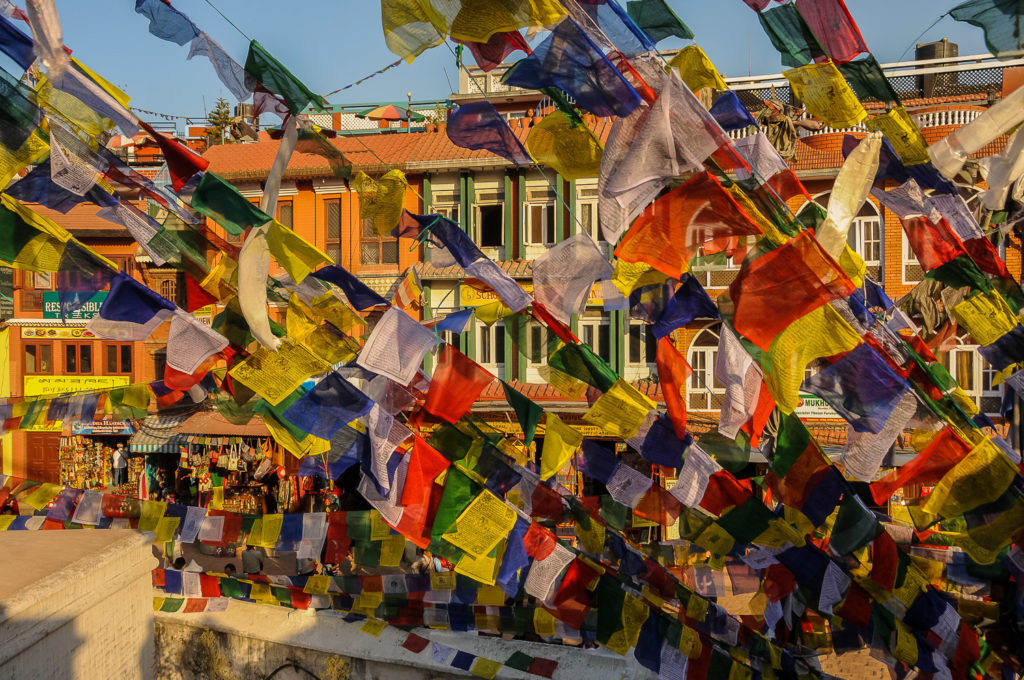
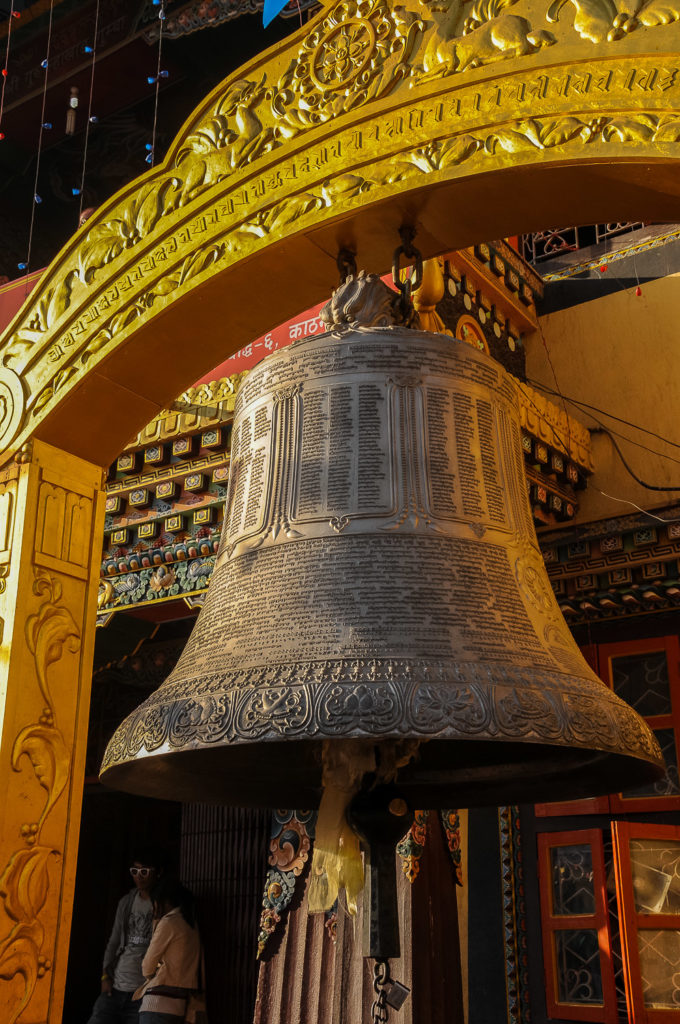
But for me, while this beautiful, bustling city was awe inspiring, the main purpose of the visit was to make an attempt to see the Himalayas -particularly Everest.
We were there for three nights, and it took three attempts to fly close to the world’s highest mountain. The first morning I arrived at the Kathmandu airport, Yeti Airways kept insisting we’d make the hour long flight into the Himalayas but as the clouds got heavier and heavier, they had no alternative but to call the trip off. We never left the terminal.
On the second morning, the weather looked a lot brighter as we boarded the Everest Express. Strapped into our seats and actually travelling along the bumpy runway, the pilot came on the PA system to advise us that conditions were deteriorating and it simply wasn’t clear enough to see the mountain. That flight was abandoned.
On the third morning, my final chance, was our final day in Nepal. This time the weather was perfect. The blue sky crystal clear and not a sign of a cloud. The propeller driven Jetstream 41 rumbled down the runway and we were away. It was an absolutely magnificent sight as we flew right along the Himalayan range. And we were able to take turns going into the cockpit to take photographs as we flew just five miles from the peak. I was on top of the world.
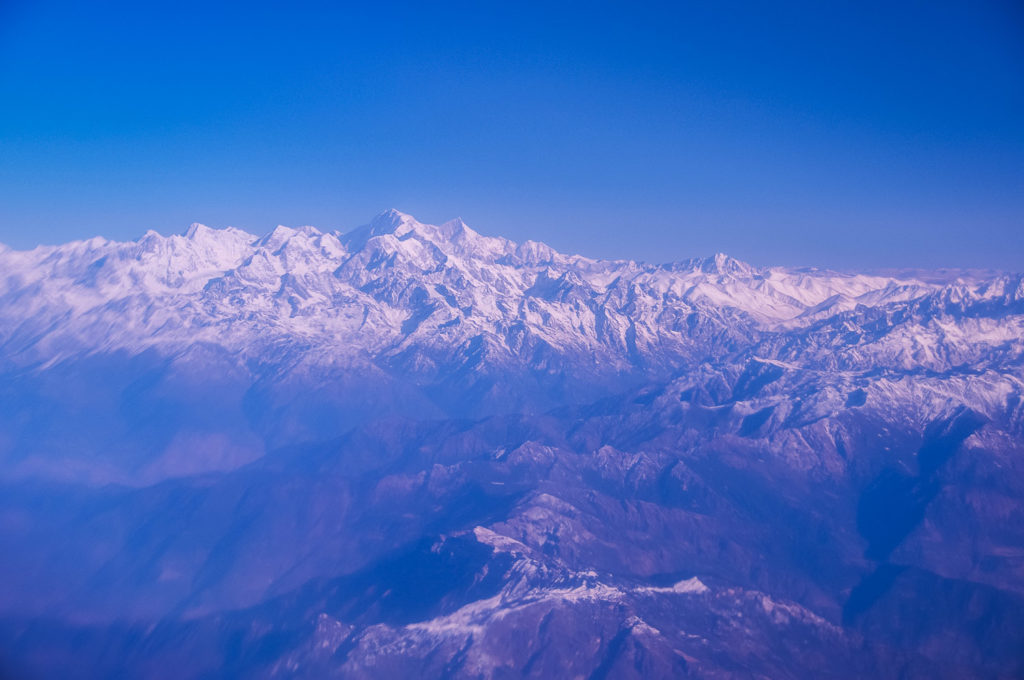
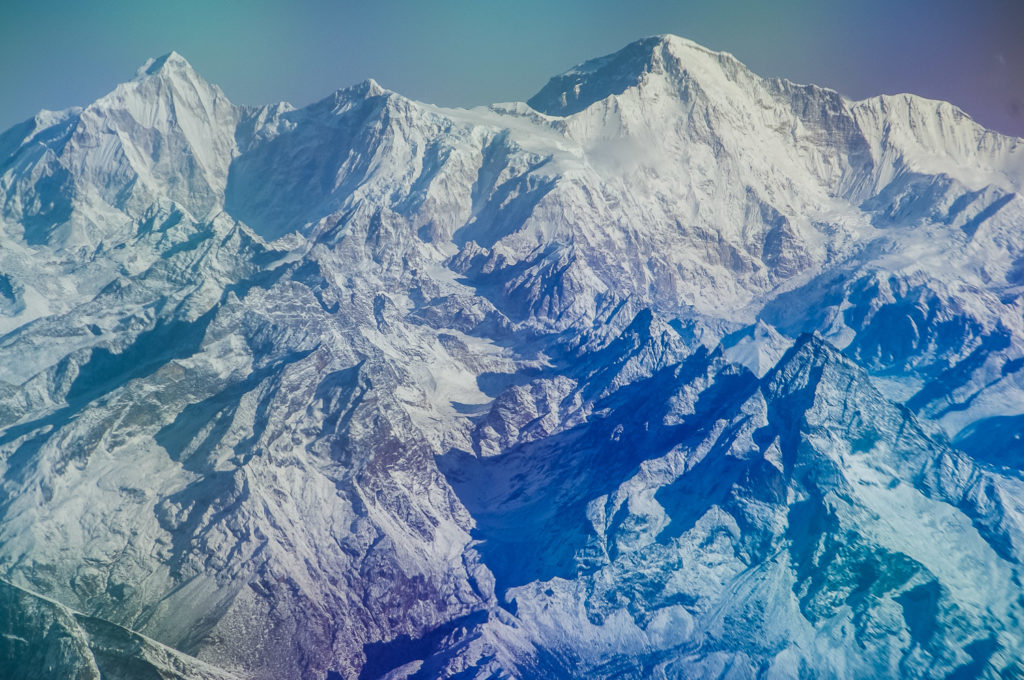
From Nepal, we flew back to Delhi to begin our 16-day tour of Rajasthan. It was organized by a company called Perfect Travels. And it was perfect in every way. We had our own guide/driver most of the time, and we needed him as there is no way an inexperienced driver would want to drive the rough, chaotic, potholed roads in India. We bumped along most of the way at speeds of not much more than 30 miles an hour. And on the longest legs, our driver would drive through the night while we flew ahead.
The hotels were superb. Seven-stars in some cases – and the whole package for the two of us was less than $10,000. Every night within moments of checking in, there was a phone call from the travel company checking that we had enjoyed our day and wanting to know if there was anything we needed.
India is nothing if not a country of contrasts. A riot of colour, rich magnificent historic buildings and wonderfully generous people. Bazaars teeming with industrious vendors and full of pungent smells.

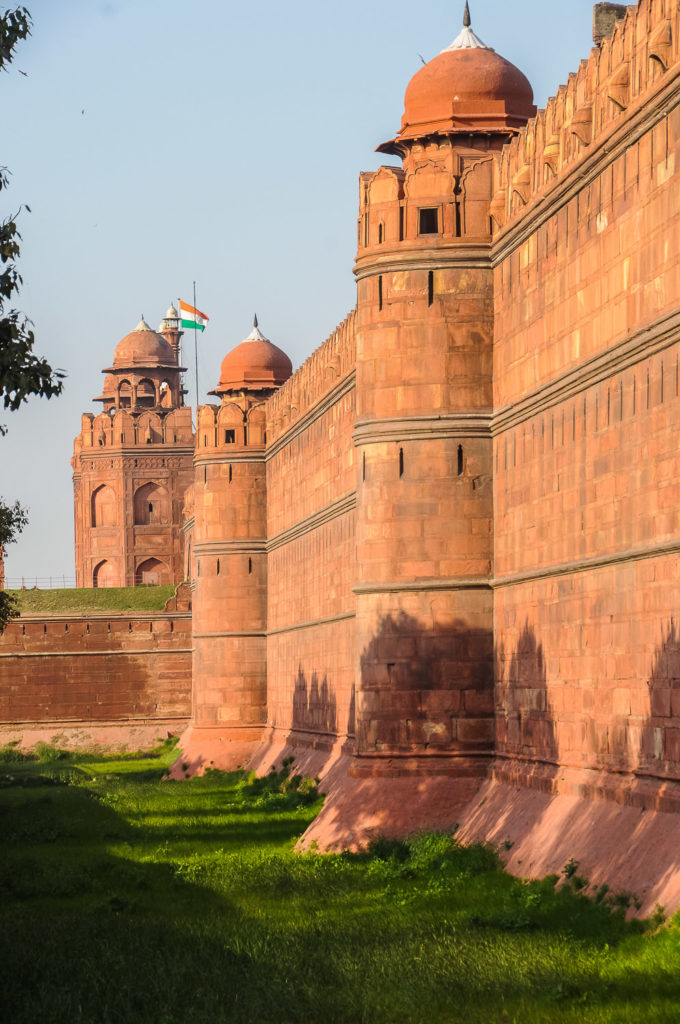
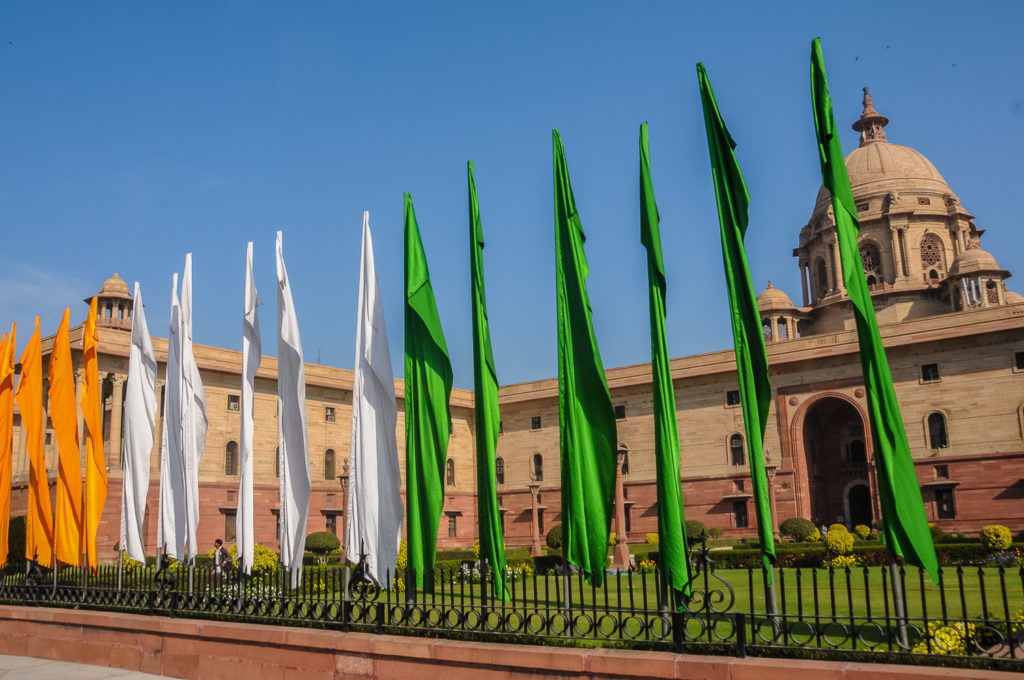
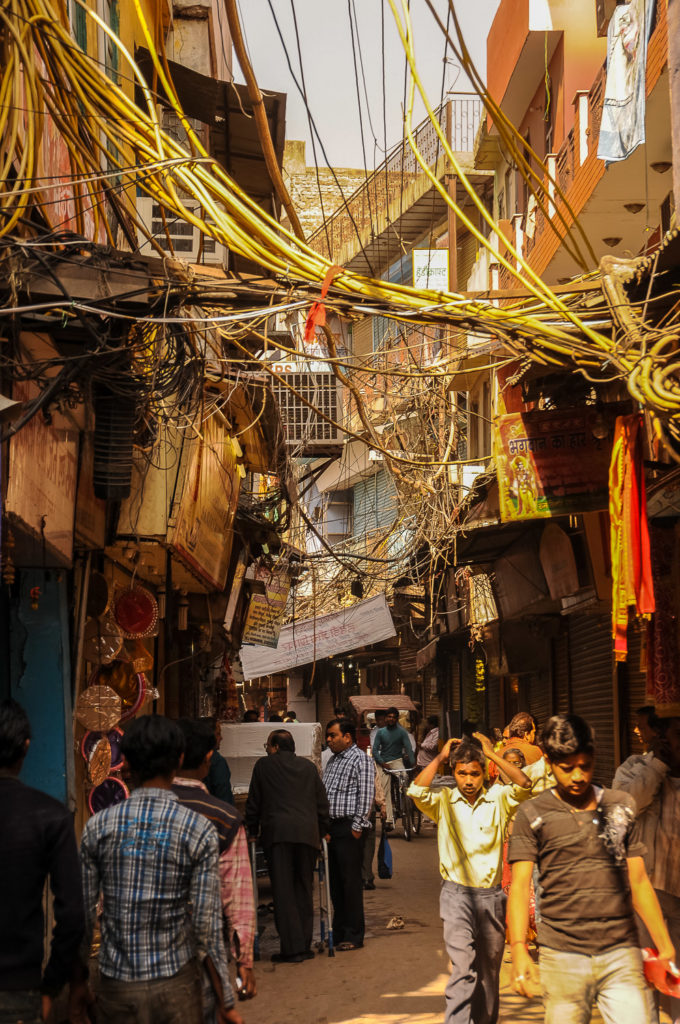
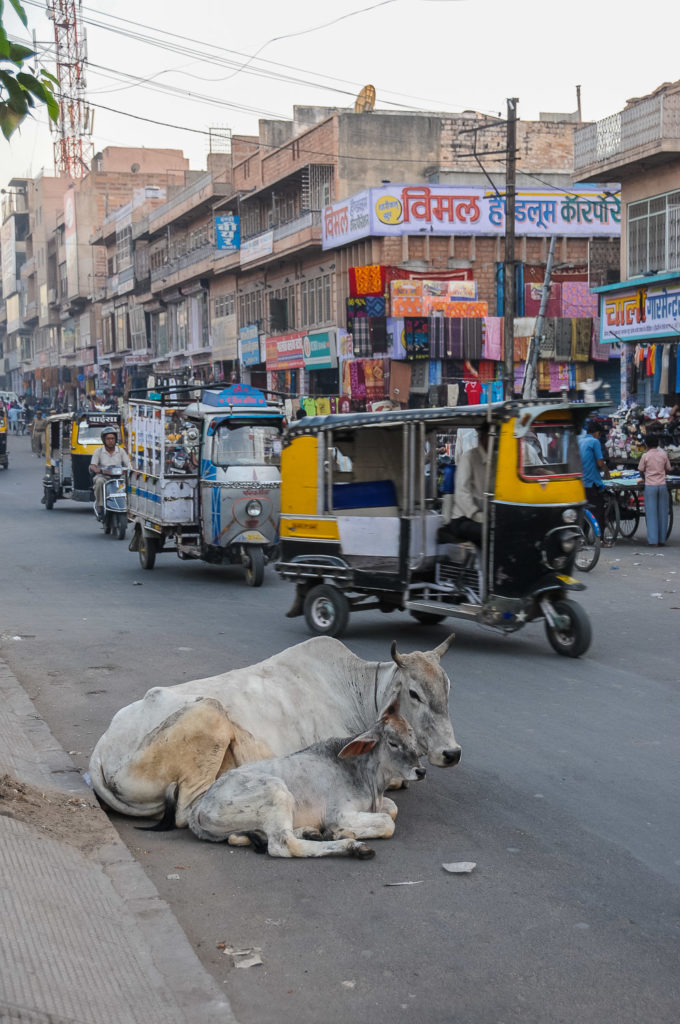

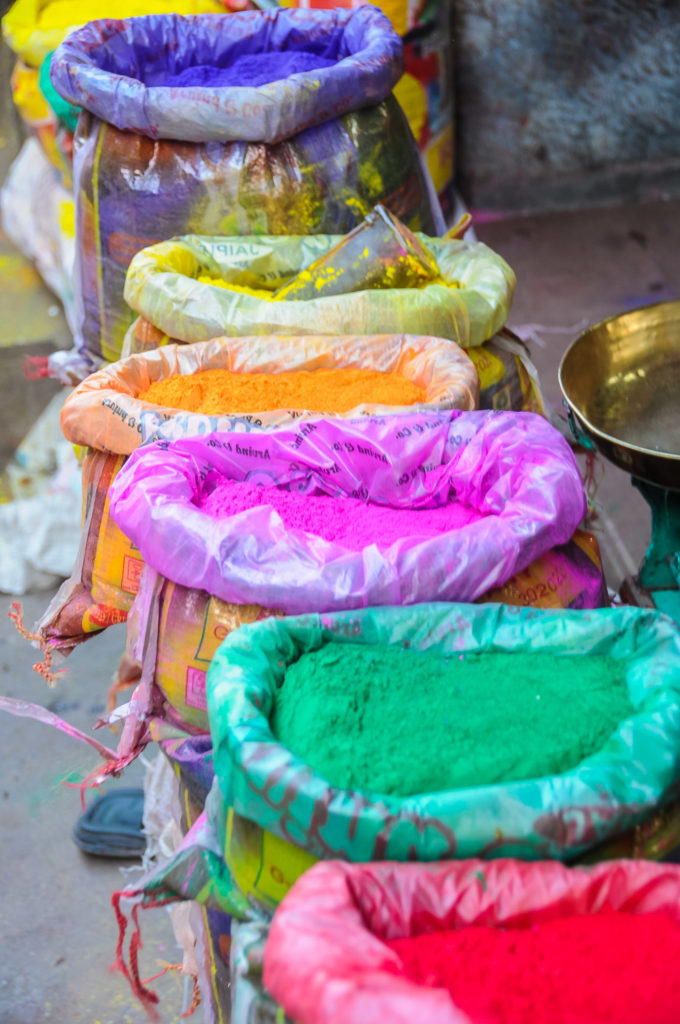
But on the other hand the worst poverty we have seen anywhere, with hawkers and beggars on most street corners, unimaginable filth and dogs everywhere. And cows tethered to posts, wandering on the streets – and even inside stores.
In fact, before leaving Canada it was the first time on any trip in the world that I felt nervous and concerned about our safety. Concerns that were totally unnecessary.
The highlights of our trip through Rajasthan, included Delhi (you must see the Red Fort and India Gate), Udaipur – where we stayed in the seven star hotel, The Leela, arriving by boat across one of the city’s lakes. As we stepped into the lobby hundreds of rose petals were released from the ceiling onto our heads. Next, the desert forts of Jodhpur, and Jaipur, where the pink sandstone Palace of Winds stands out as one of the most beautiful buildings I’ve ever seen.
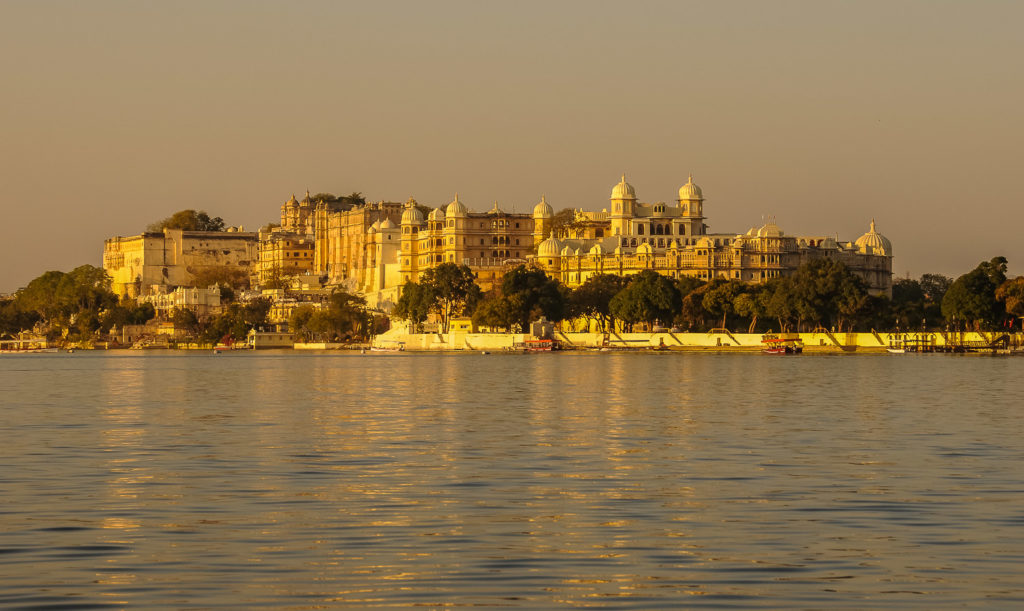

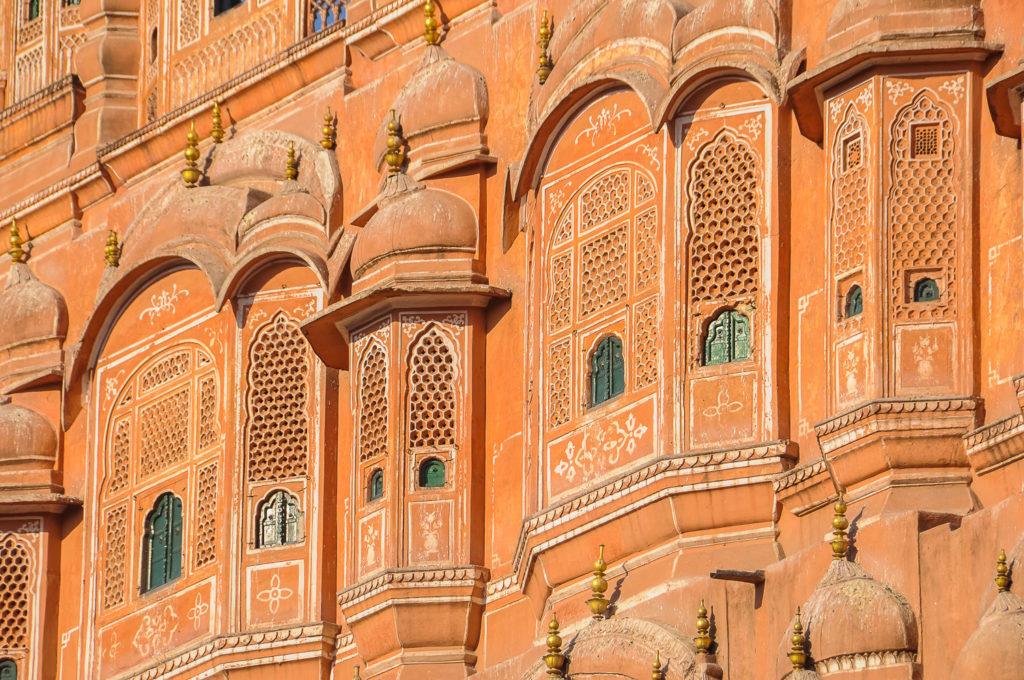
Built in 1799, it was an extension of the Royal Palace of Jaipur and was named because of to its clever cooling system which allows gentle breezes through the inner rooms during the heat of Rajasthan summers. We were there in August and it was over 100 degrees Fahrenheit.
We stayed in our first tiger park – Ranthambhore – on the way to Agra, home of the iconic Taj Mahal and one of the new Seven Wonders of the World. It was even more magnificent in real life than we had imagined and much bigger. Our guide was able to get us in at first light to the immense mausoleum, which was built between 1631 and 1648 by the emperor Shad Jahan in memory of his favourite wife. It is the jewel of Muslim art in India and it was stunning to see the pink light of the sunrise reflected on the white marble walls.
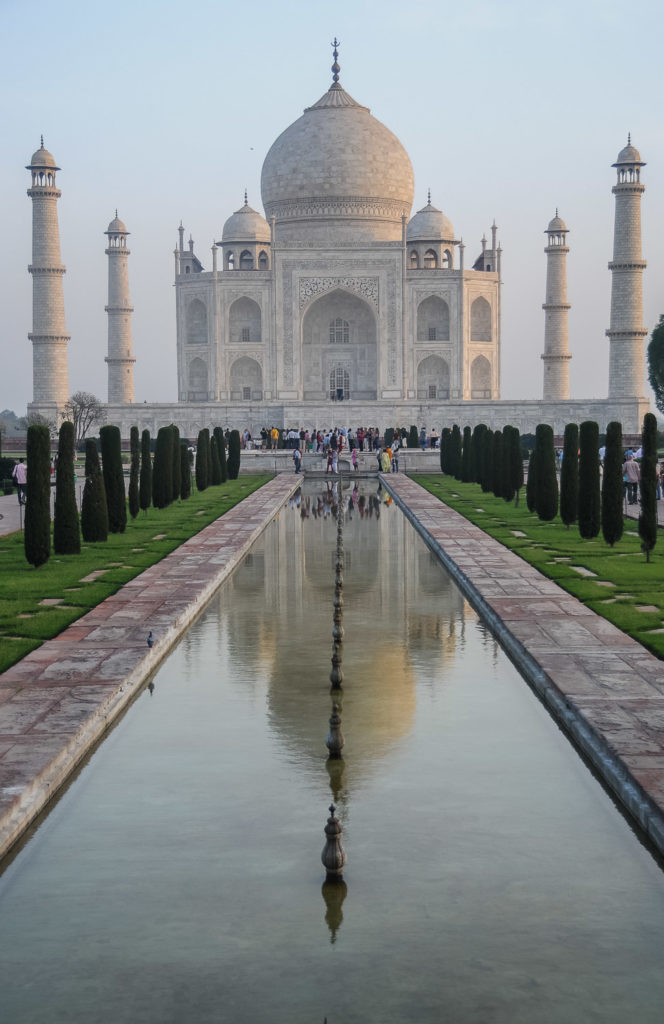
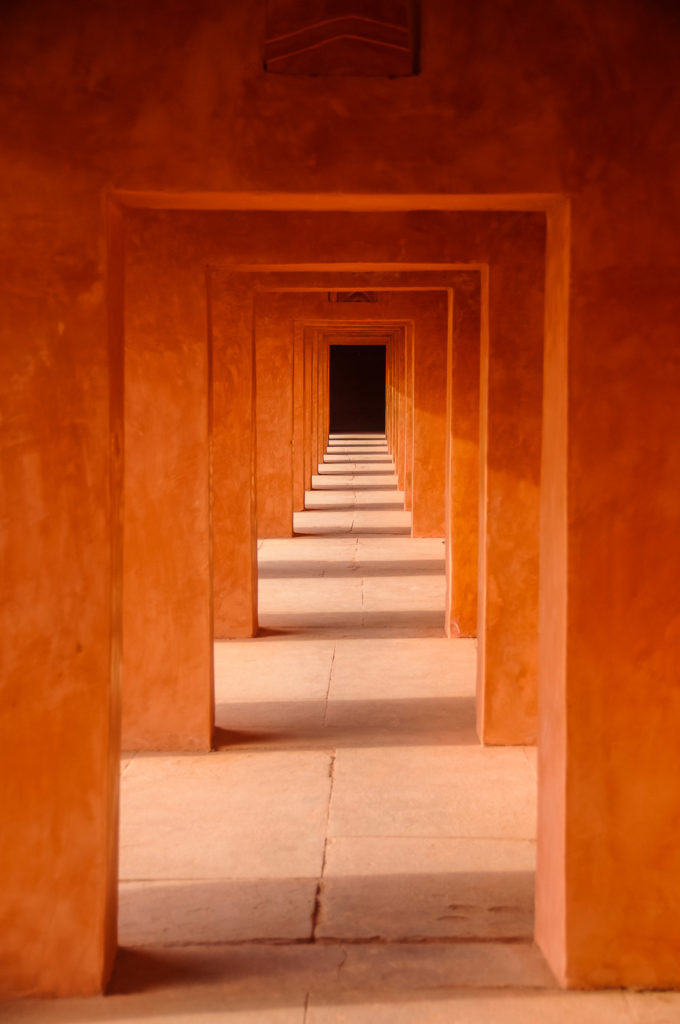
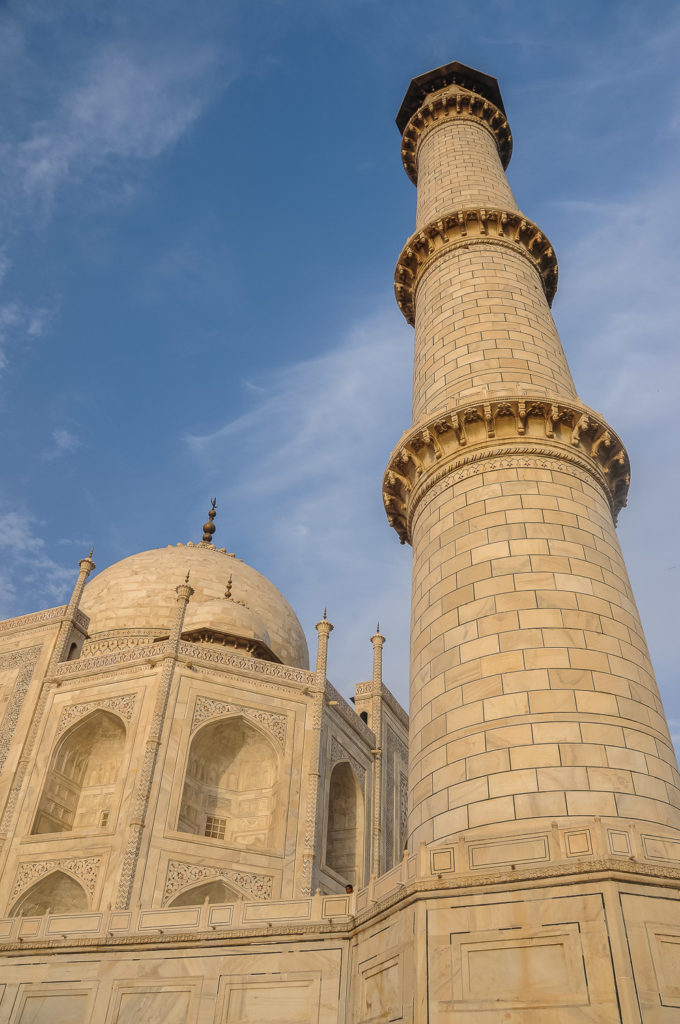
After leaving Agra we took an overnight train to the second tiger park. It was supposedly a first class coach. But, wow, what a shock to the system. I have never seen so many flies in my life as we waited for the train to arrive – and when we boarded there was nothing remotely luxurious or first class about it. We were crammed into two bunks – upper and lower – but shared the space with two other bunks on the opposite side of the cabin. And as we tried to sleep, every time the train stopped – which was often – there was a revolving door as other passengers would replace the ones leaving our tiny compartment. Almost always men, men who seemed to snore their way through the night. Suffice to say, not much sleep was had by us!
And as we boarded the train in Agra I knew I had a boil developing on the back of my head. Lying in the dirty bunk, with its filthy pillows, I’m sure that is where the boil became seriously infected and when I got back to Vancouver the infection was diagnosed as the super bug MRSA. (While that in itself was bad enough, the antibiotics used to treat it put me a day or so away from death after developing a severe allergic reaction called Stevens-Johnson syndrome, a potentially fatal condition.But that is another story for another day)
We arrived at the tiger park tired and dirty. As we approached the safari lodge, it looked, at least from our vantage point, disappointing. How wrong we were! Once we got through the underwhelming entrance it turned out to be one of the finest, classiest lodges we had ever stayed in – with opulent rooms and incredible food. Called Samode House, it was designed on the best of African lodges and no detail was spared. It was also close to the main entrance of the park and they provided us with knowledgeable guides and vehicles to go on regular safaris. It was Indian hospitality at its best and, of course, this is where we experienced our first tiger sighting . All in all a memorable experience.
From there we were driven to Khajuraho, to see the temple of love – with its erotic, Kama Sutra style sculptures depicting every imaginable – and some unimaginable – love-making positions. The group of Hindu and Jain temples were built between the ninth and 11th centuries and are now a UNESCO world heritage site.
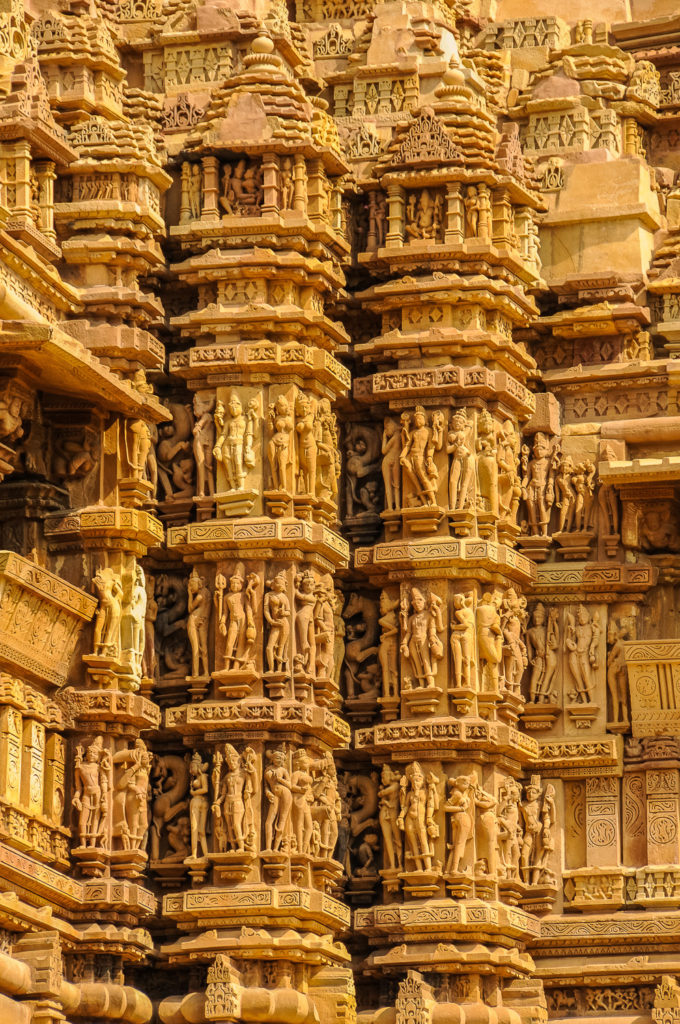
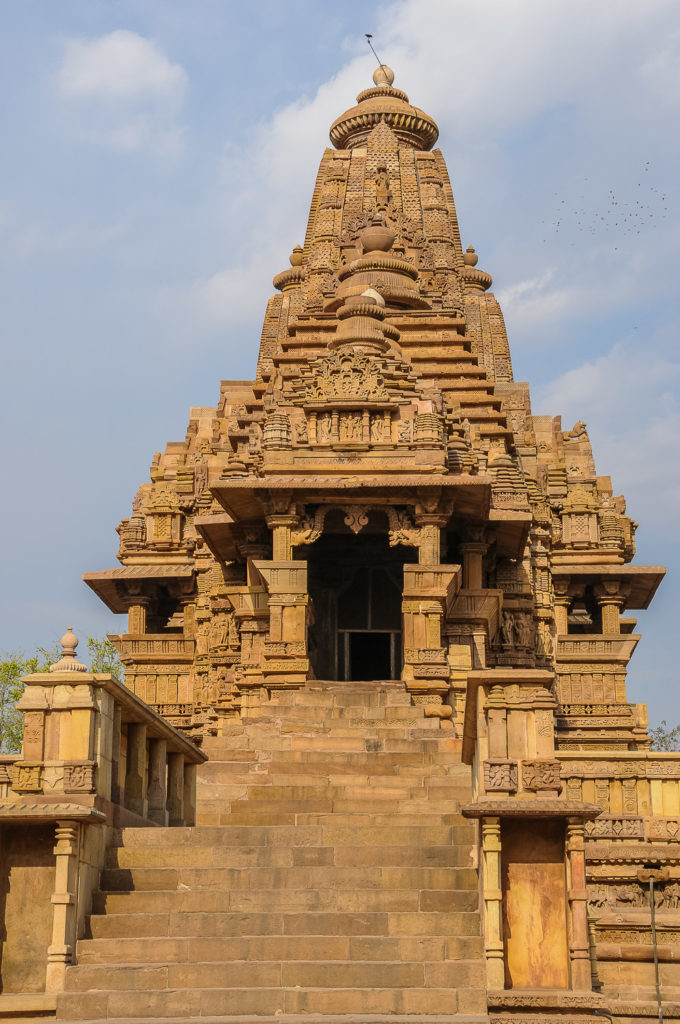
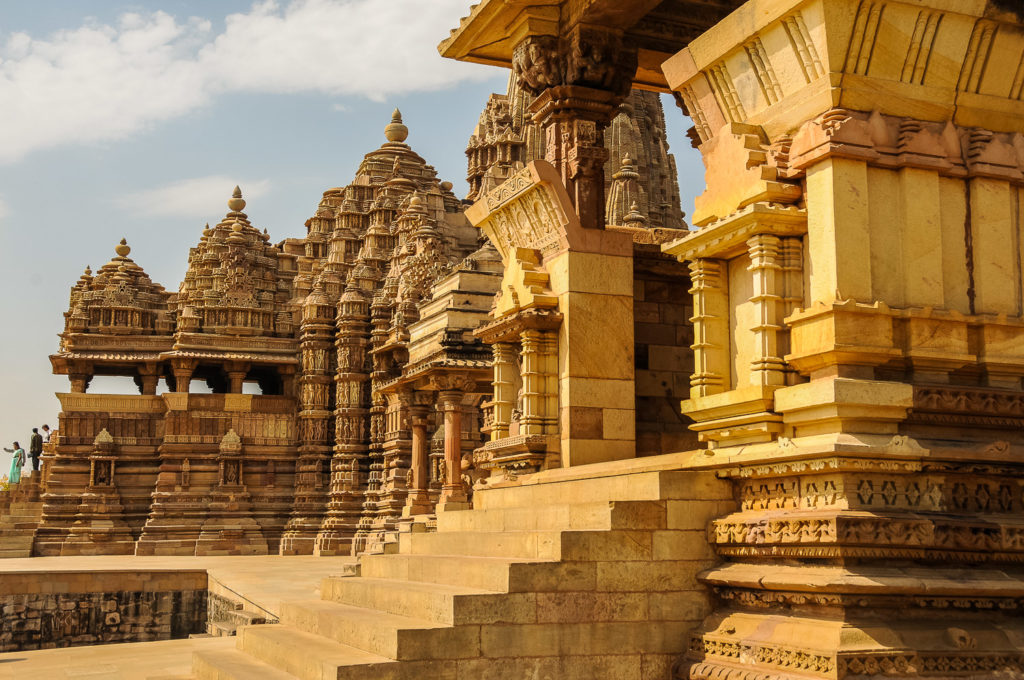
We were in two minds about visiting Varanasi, regarded as the spiritual capital of India. The city draws Hindu pilgrims who bathe in the Ganges River’s sacred waters and perform funeral rites. There are 2,000 temples amongst the city’s winding streets. And a surprise around every corner.
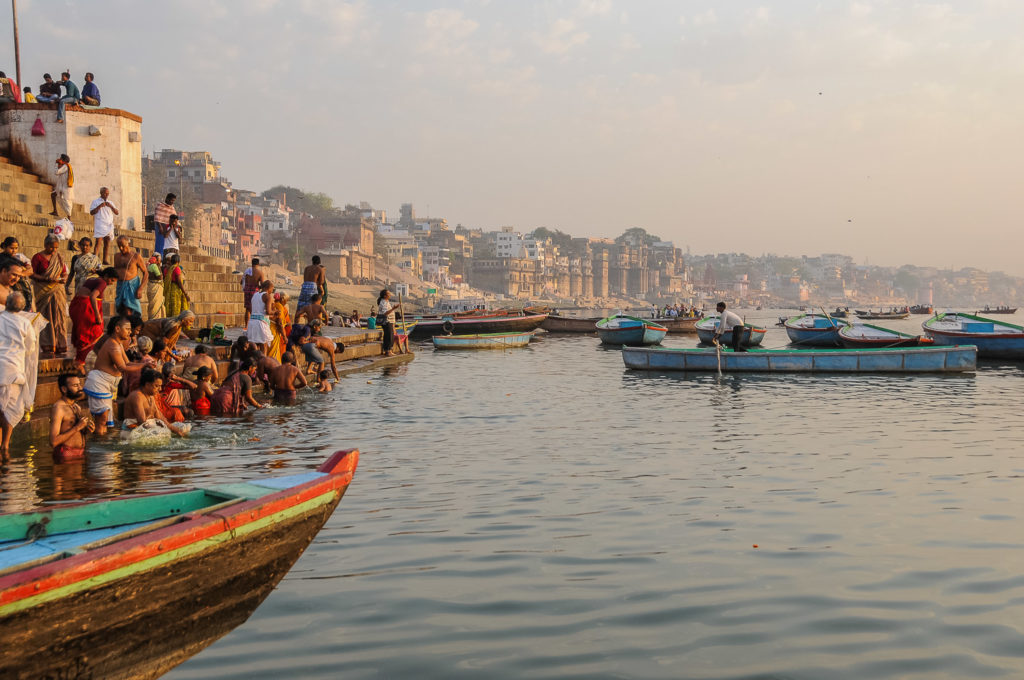
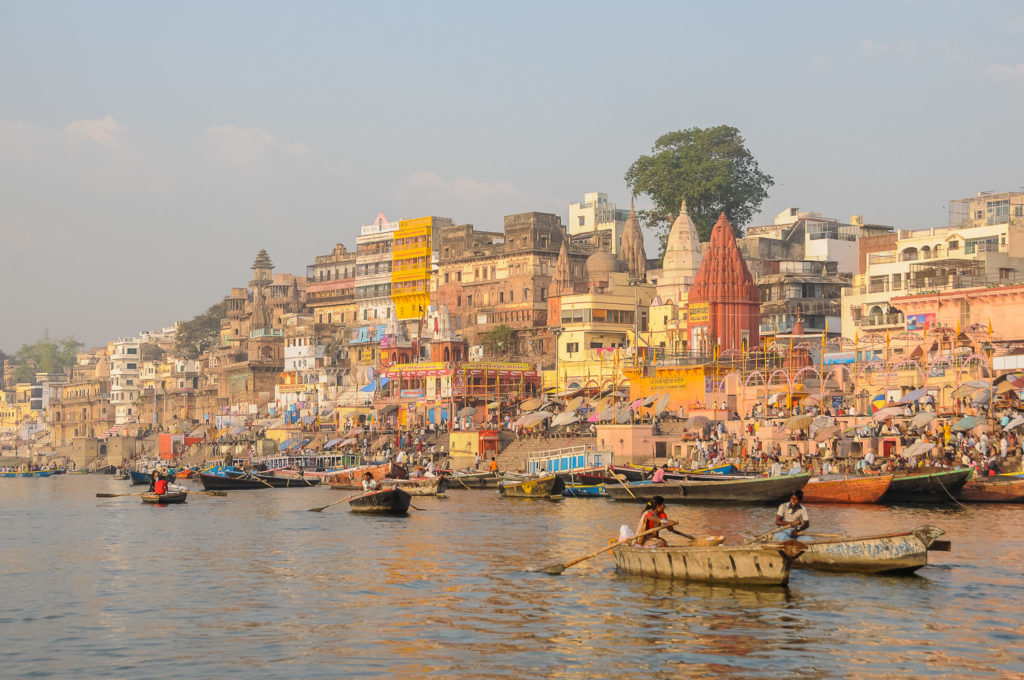
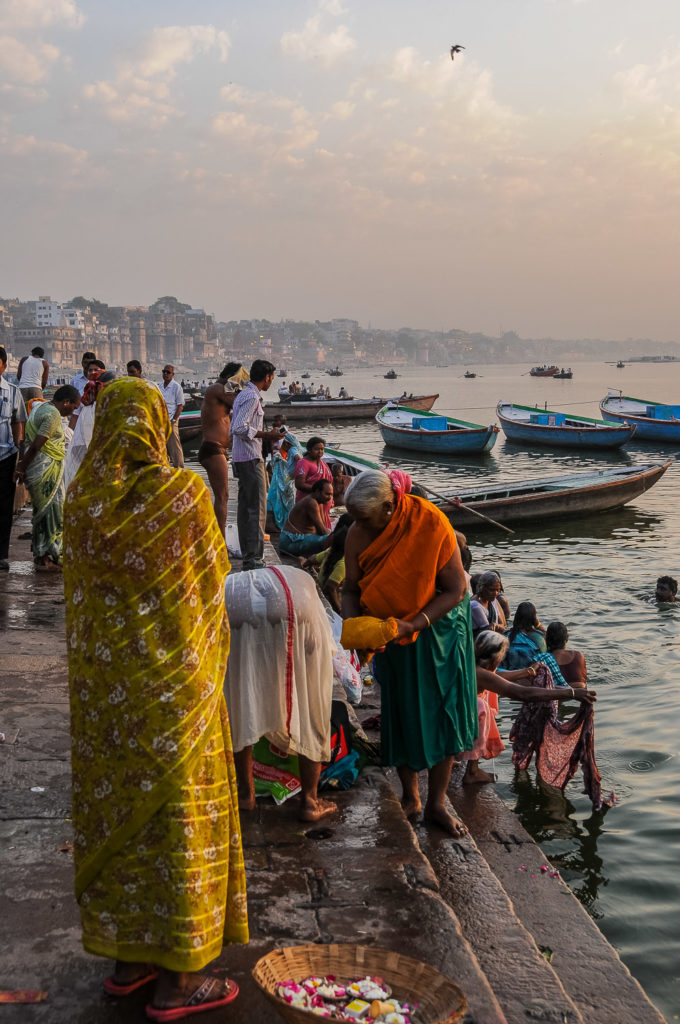
But we were so glad we did visit the city. Colourful and yet poignant, where the bodies of loved ones are cremated and their ashes scattered on the banks of the Ganges.
We had a delightful ride on our first evening in a rickshaw, or Tuk-Tuk, which sounds like a lawnmower and isn’t much faster. The driver we hired could only take us so far and passed us off to his friend who took us to see the sunset on the Ganges. As dusk fell, we trotted after him through a rabbit’s warren of narrow back streets to visit his home, wondering if we’d ever be seen again! As it turned out, he and his family made and sold beautiful pashminas from their tiny cubicle abode. Counted among his clients was Goldie Hawn (he had photographs with her) and when we said she had lived briefly in Vancouver, he whipped out a letter from her, stating that she had indeed lived there. As a result we were accepted into the “inner circle”, friends of my friends, so to speak!
The Indian leg of the journey ended in Mumbai, where we stayed in the Taj Mahal Palace Hotel, which had been attacked and set on fire by terrorists just three years earlier. One hundred and sixty people were killed and hundreds more injured. It was hard not to forget that this beautifully refurbished hotel had been the subject of such devastation and horror.
Mumbai, formerly Bombay, is a giant, polluted city – a city of slums and entrepreneurs. I particularly remember the giant laundry, the dhobi Ghat by the side of a freeway, where hundreds of thousands of pieces of clothing were beaten clean on rocks or stones, then hung up to dry in the unrelenting heat before being ironed by a heavy coal iron weighing 15 pounds.
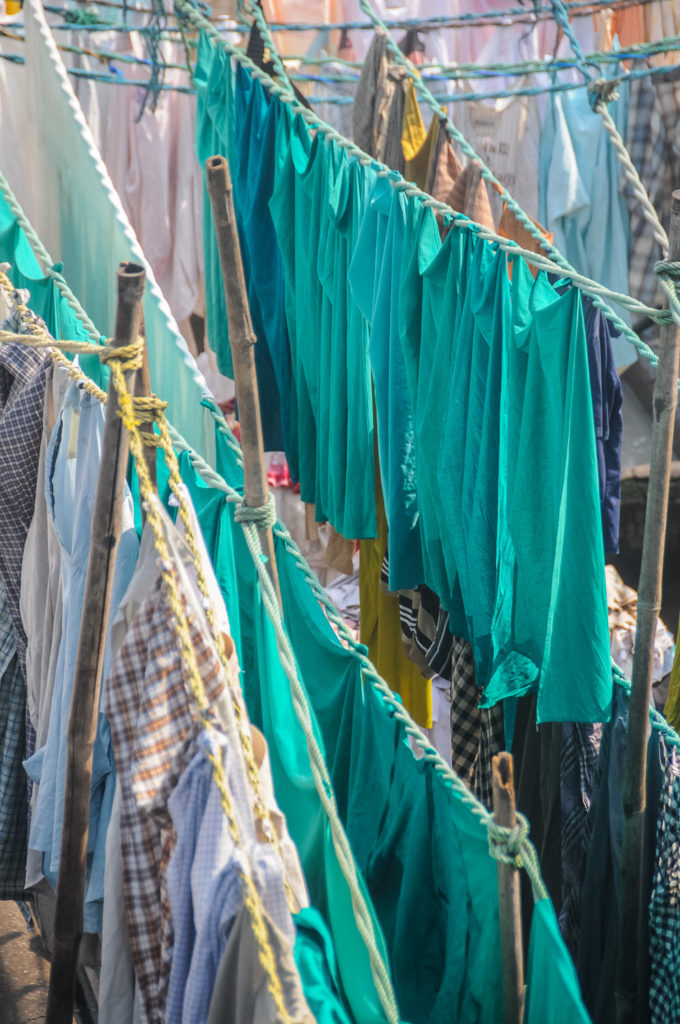
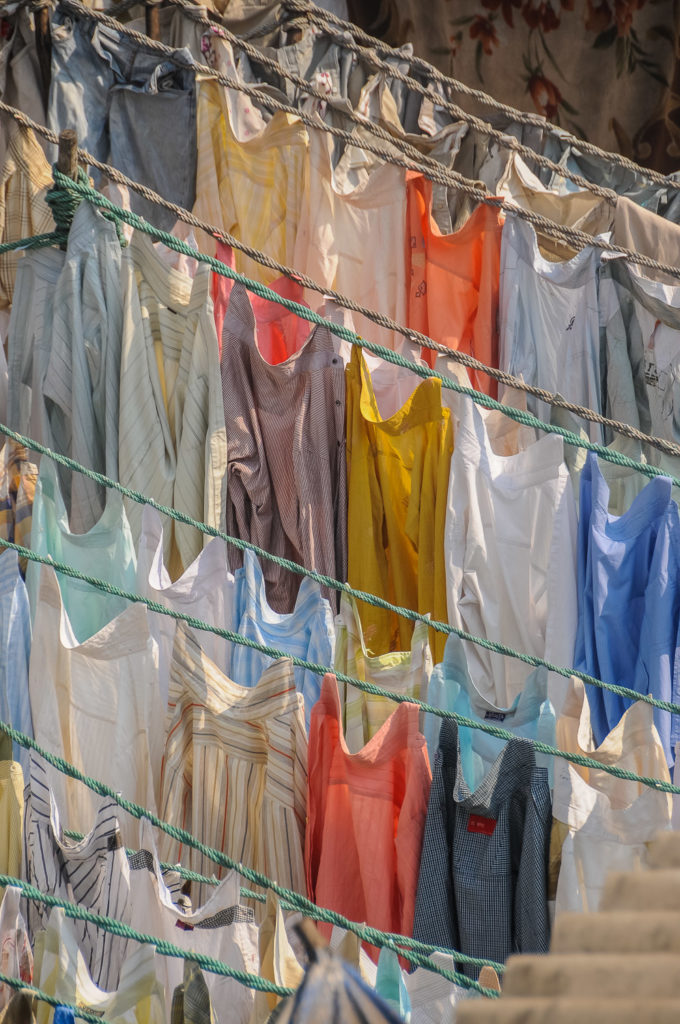
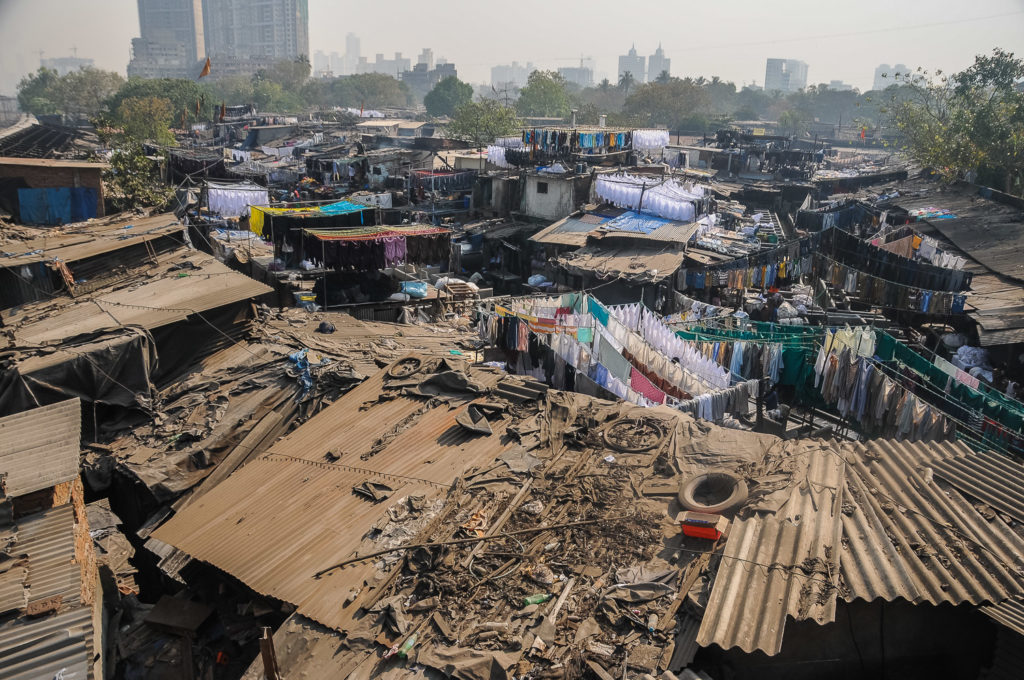
And as we left Mumbai, Clive’s next law of travel kicked in.
It is always been my belief that when you are flying half way round the world, it is the flights that are often prohibitively expensive. So I take out my atlas and study the surrounding countries to see what other side trips I can add on.
Therefore, after leaving India, we flew to Oman (where we arrived, me wearing a massive head bandage after treatment by an Indian doctor for my infected boil…..I looked like a terrorist, but was waived through immigration.)
Muscat, Oman is friendly, pristine and really beautiful. We made friends with our taxi driver on the first day – and he insisted on giving us a city tour the next day, even taking us to his home to meet his family and after hearing my wife loved dates, thrusting dates from his garden into our hands.
The splendour of the Sultan Qaboos Grand Mosque was as beautiful a piece of architecture as you can imagine. The Indian sandstone changes colour with the light and provided us with peace and tranquility after the pandemonium that is sometimes India.

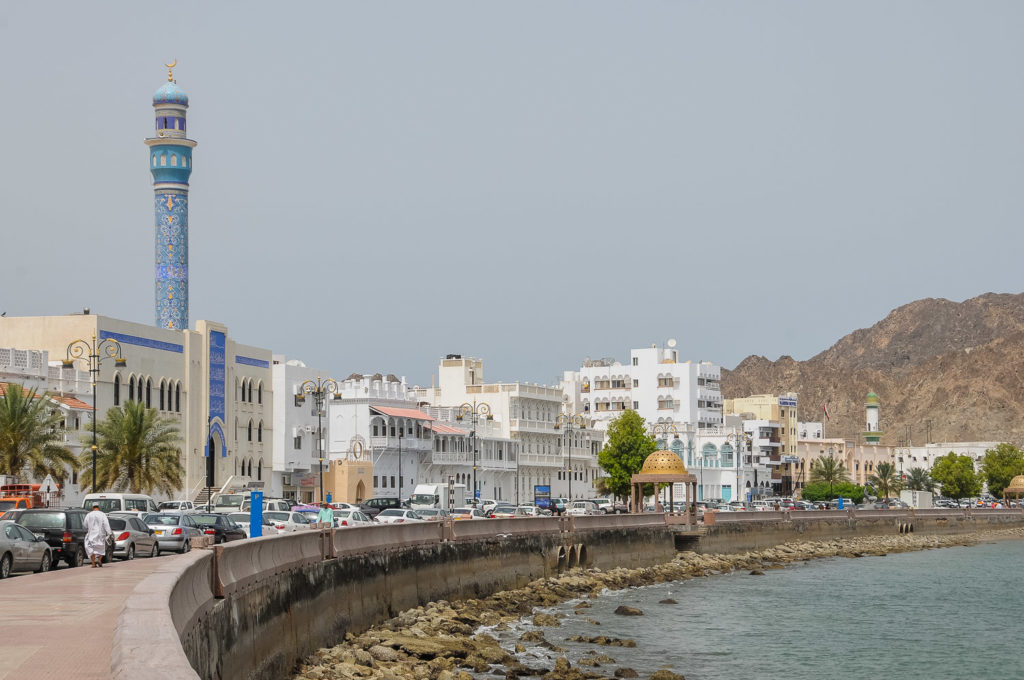
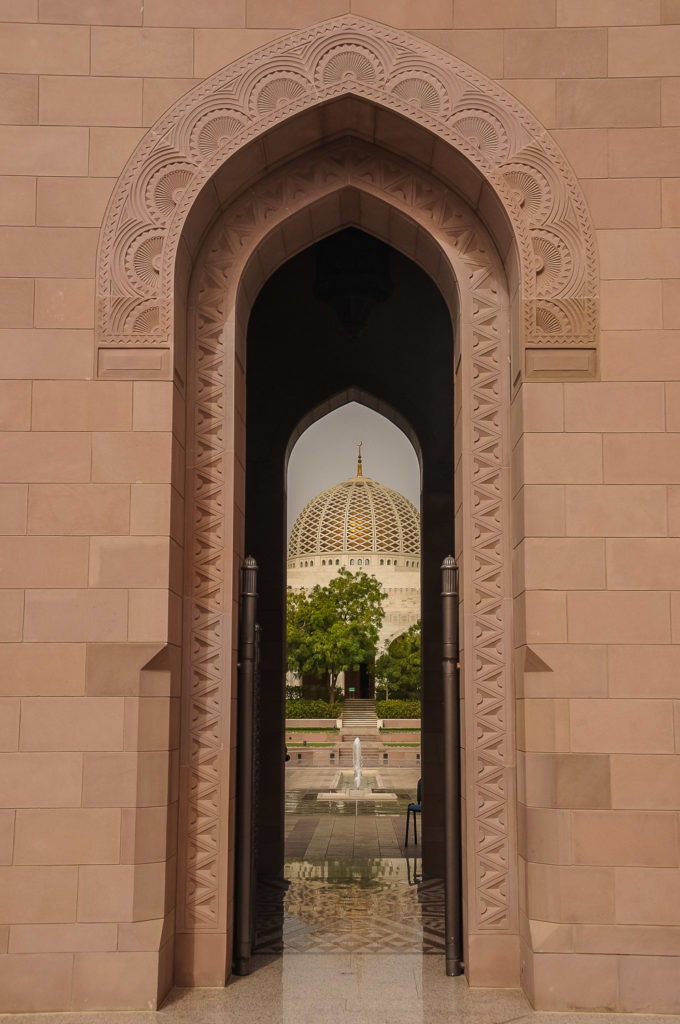
The people went out of their way to be friendly and at one point when we asked for directions to cross a busy highway to get to a restaurant that had been recommended to us, the man we asked insisted on driving us there because it was such a complex road pattern.
Our trip ended with ten days in Jordan and Israel. Jordan ranks with Peru for its stunning architectural ruins. A new Wonder of the World, the city of Petra was built as early as 312 B.C. It was carved in the mountains out of the surrounding rose red stone by nomadic Arabs, and is famous for its rock-cut architecture and water conduit system.
Petra wasn’t discovered by the Western world until 1812 by a Swiss explorer who described the city he found as “half as old as time”.
Another UNESCO world heritage site, the Smithsonian Magazine described it as one of the places you must see before you die. We agree whole heartedly.
As we walked the mile or so through steep canyons carved out of stunning, rugged, 220 feet high rock formations towards the ruins of Petra, our guide told us to close our eyes tightly and hang onto him. Then, as we we opened them again, before us was the Treasury, seen through a narrow fissure in the canyon wall…..one of the most stunning architectural ruins we’ve ever seen. It was simply breathtaking.
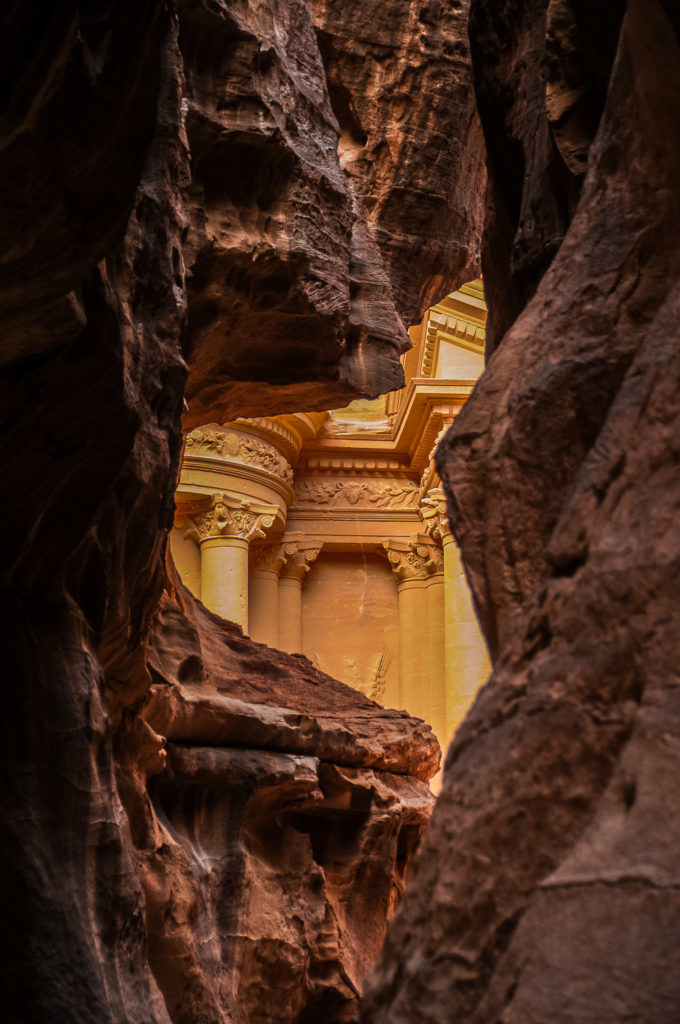
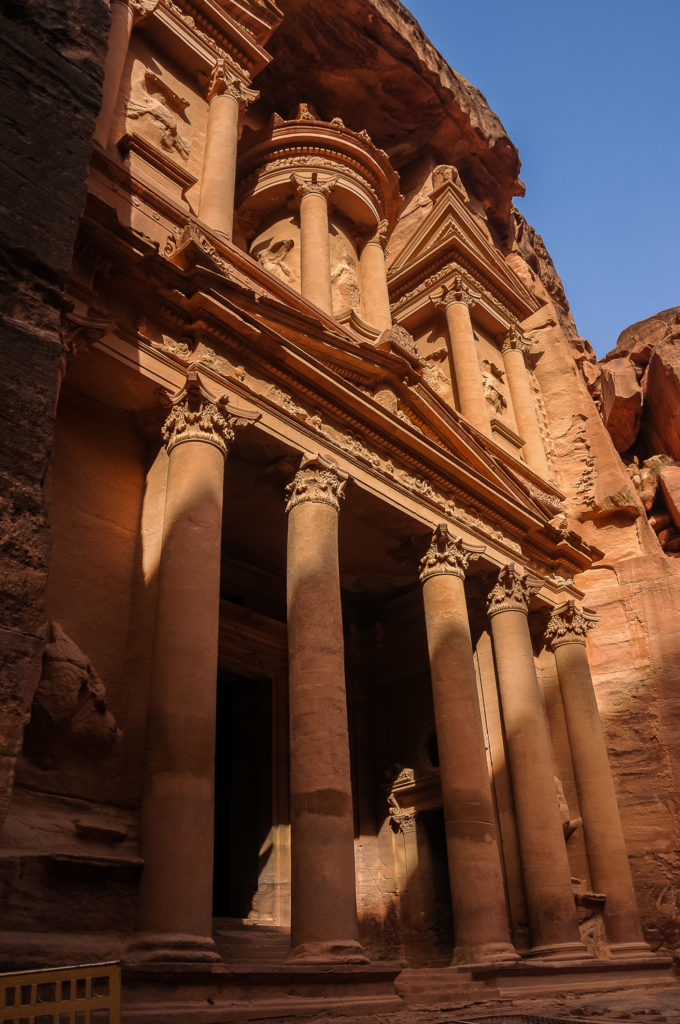
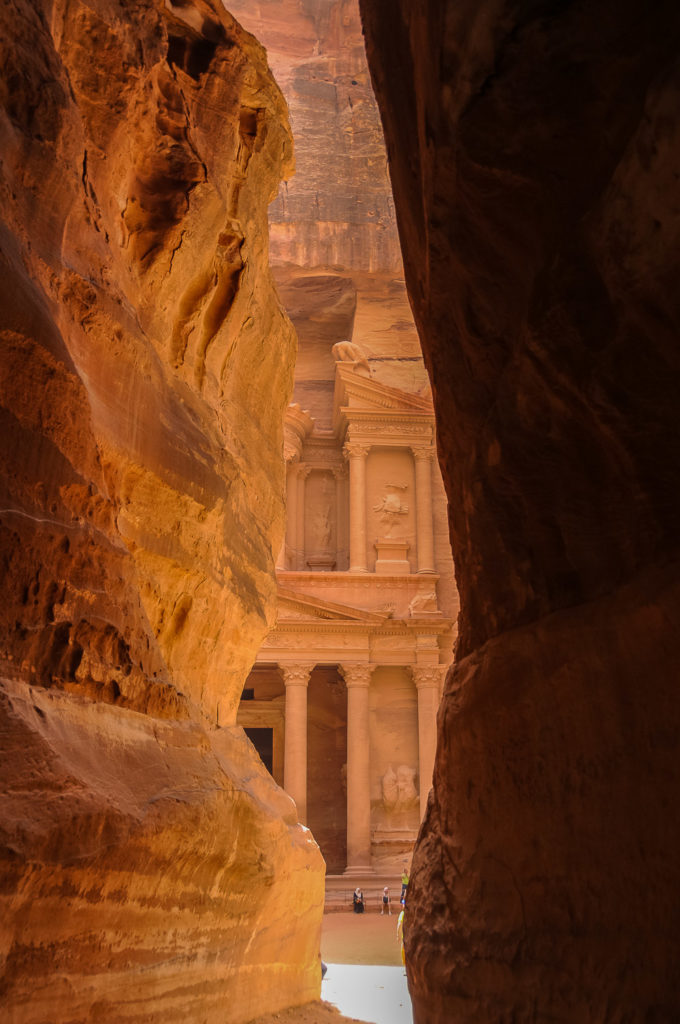
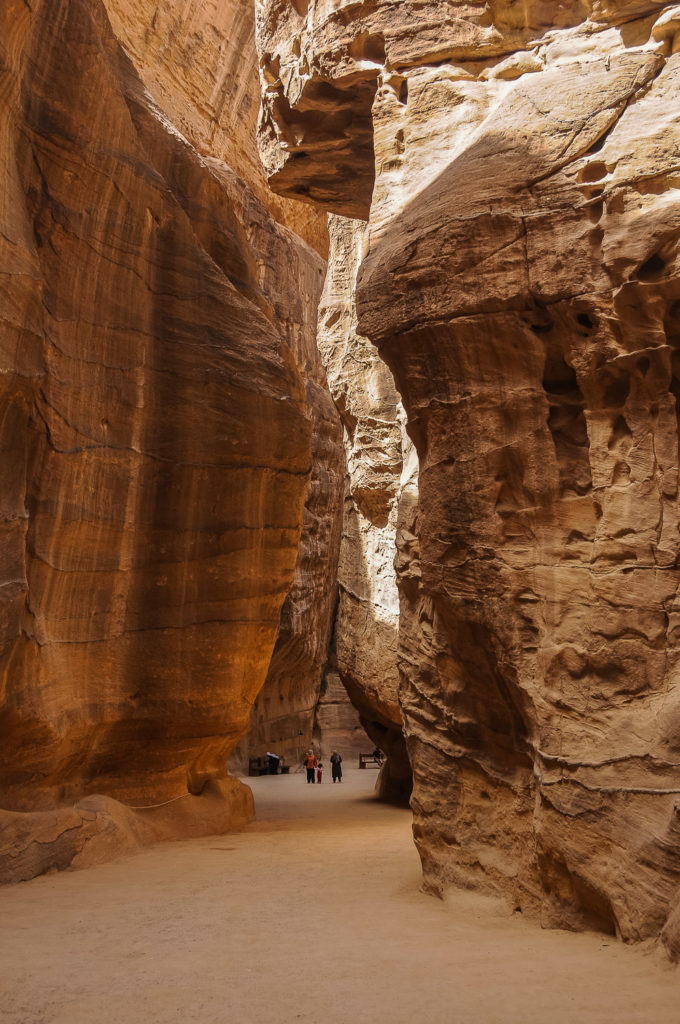
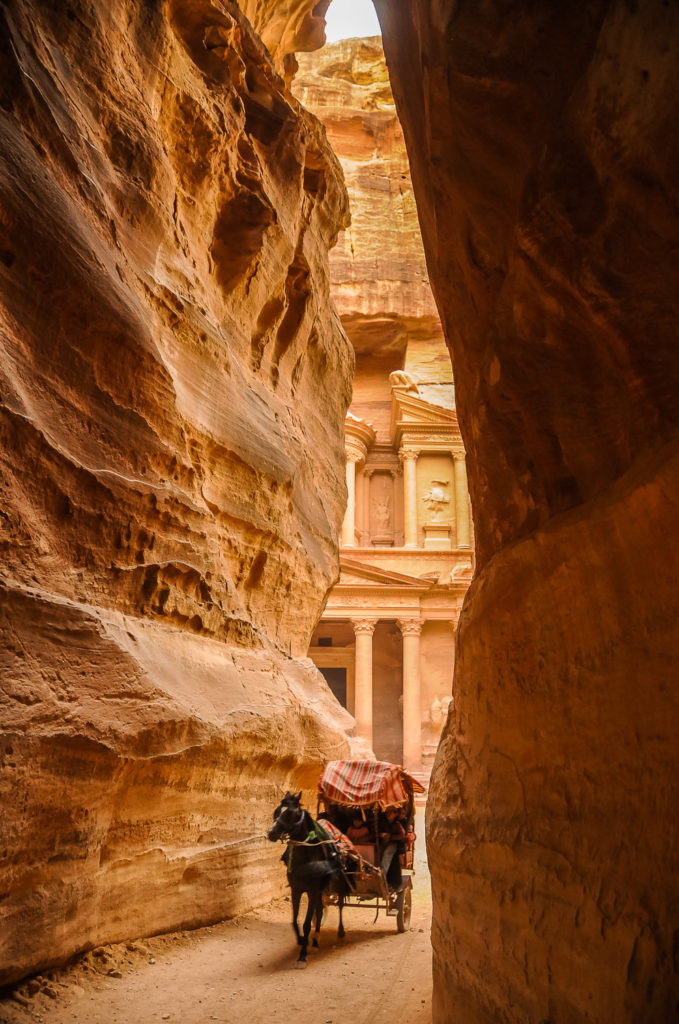

Nothing really prepares you for this amazing pink facade, about 140 feet high and 100 feet wide, which was probably built originally as a tomb.
The Treasury is the first of many dazzling wonders that make up Petra. In the afternoon heat I walked up 800 steps to see the Monastery, which was probably built as a temple. At least as imposing as the Library, it was worth every gruelling step.
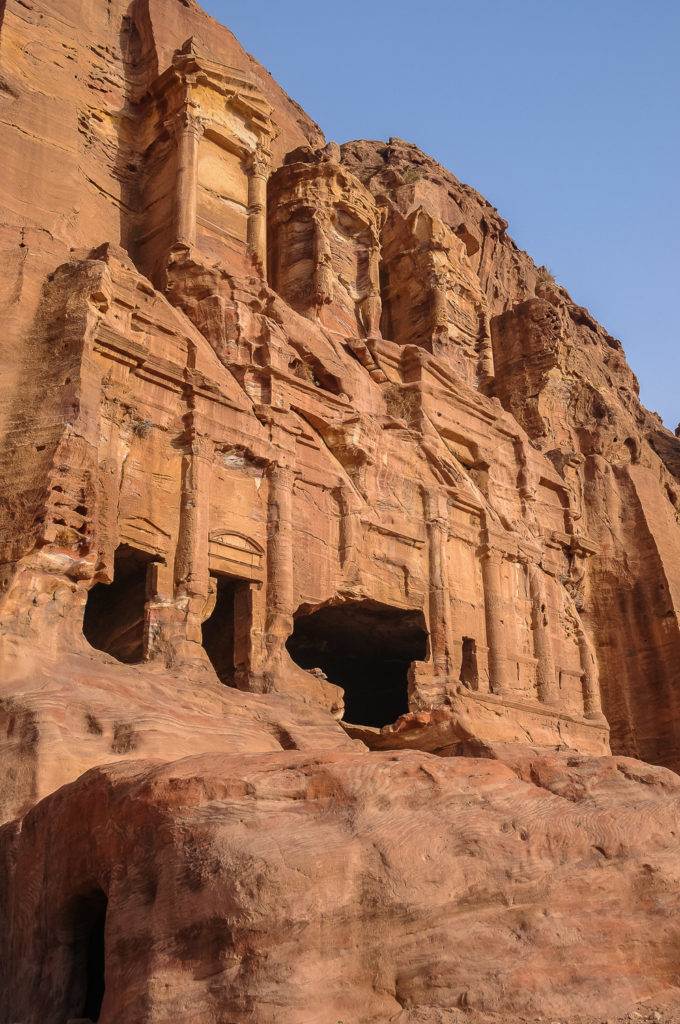
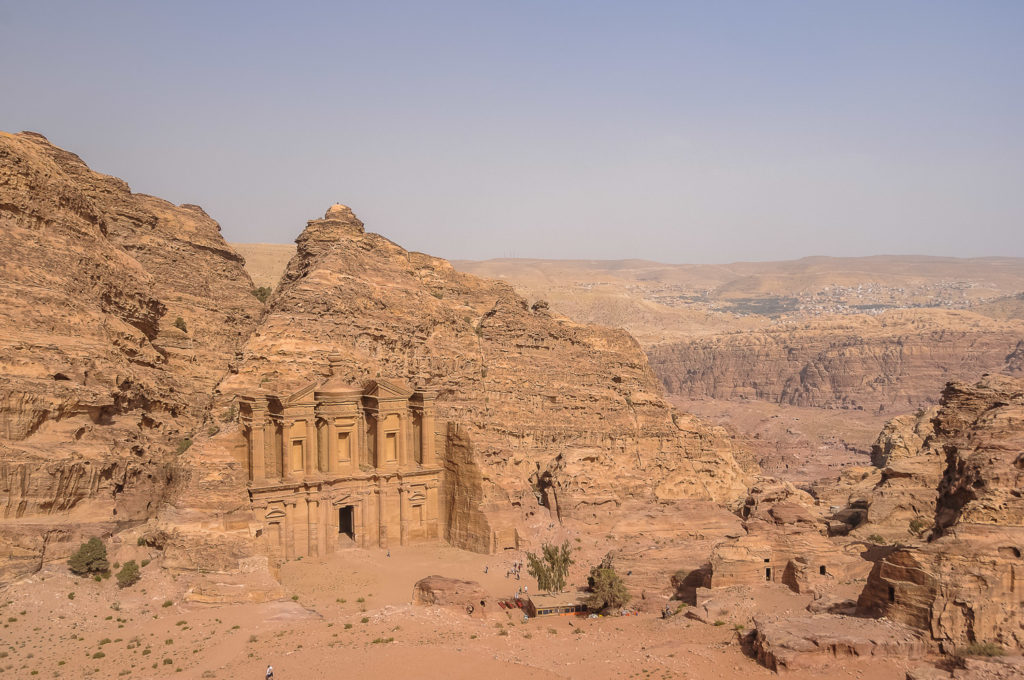
From Petra we drove south to Wadi Rum where the movie, Lawrence of Arabia, was filmed. Our Bedouin guide spoke virtually no English – yet he had the most contagious laugh and was more fun than any guide we can ever remember sharing time with. He drove us through the desert by Jeep, looking at the spectacular rock formations and sand dunes and stopping to greet young family members on camel back.
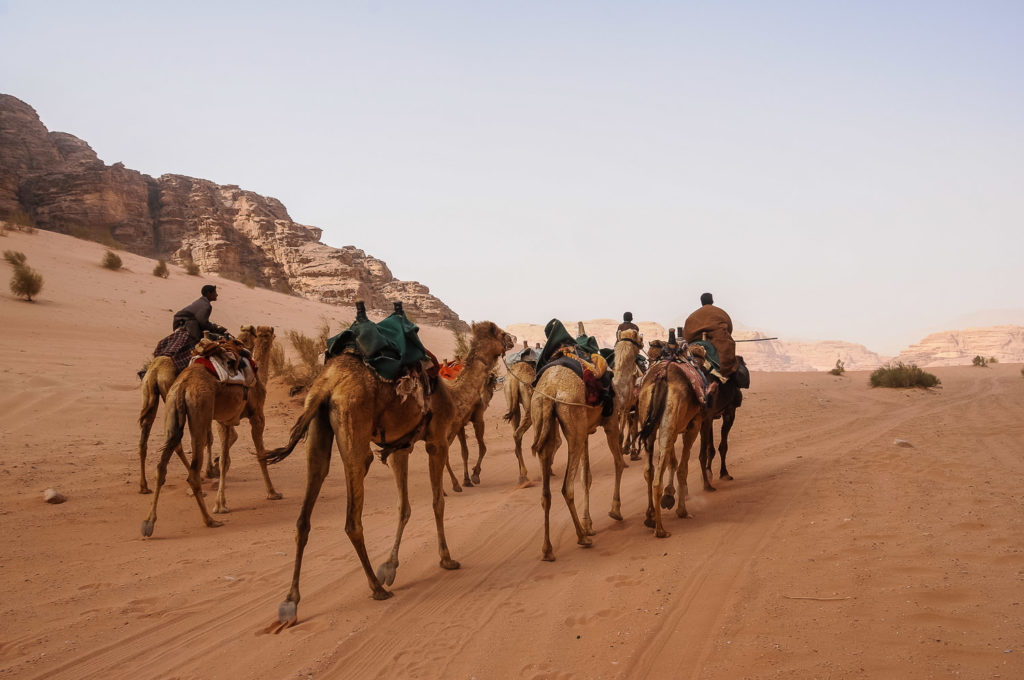
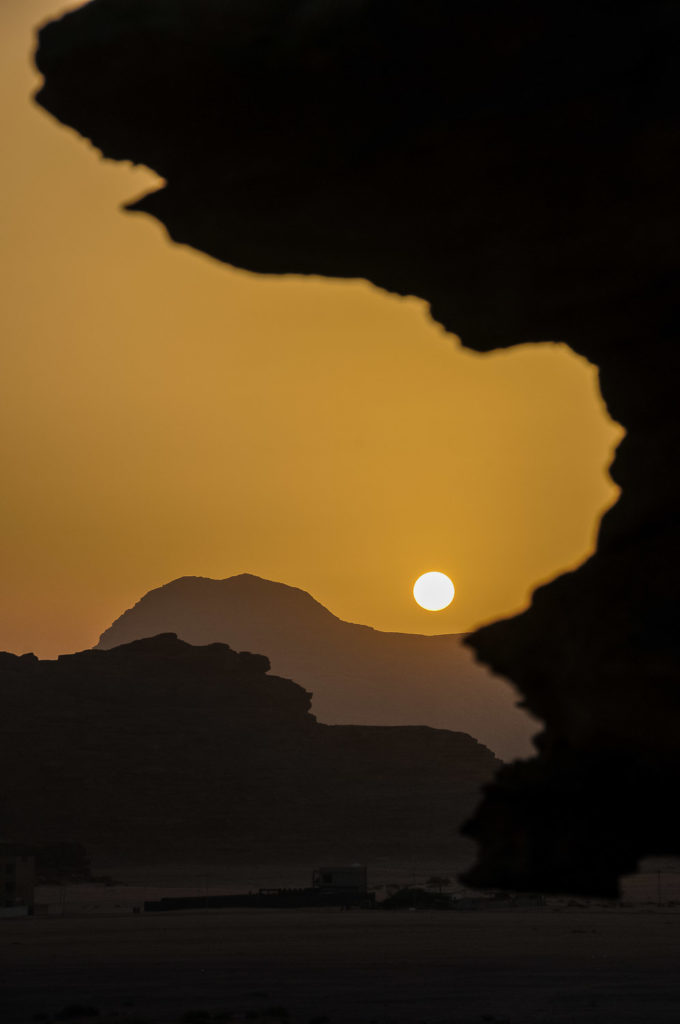


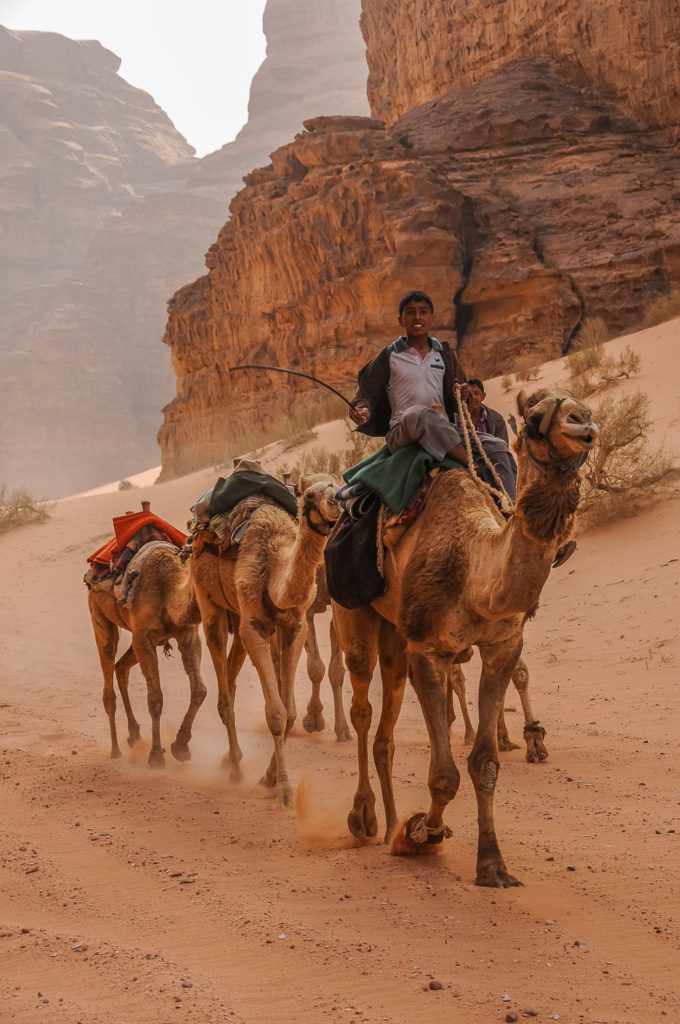
That night we stayed in a Bedouin camp and experienced tasty traditional goat and rice dishes as we watched the sun setting over the shifting sands of the desert. There are few words to describe how beautiful this vast expanse of land is. The silence alone is worth the visit. Wadi Rum was a gift from our son and it remains a cherished memory.
Finally we drove to Israel, via the Allenby Bridge. We entered with thousands of Muslims returning from a pilgrimage to Mecca in one of the most disorderly border scenes we have ever experienced. It took a couple of hours of pushing and shoving through the masses, carrying our suitcases, before we made it through immigration and into Jerusalem. It is probably worth noting that this scene would not be repeated at any other border in Israel. Israelis are nothing if not organized so there was more going on at that crossing than met the eye.
There is probably more history packed into the close quarters of Jerusalem than anywhere else on earth – in the old city around the Temple Mount is the Western Wall (Wailing Wall), the Church of the Holy Sepulchre, and the Dome of the Rock….sites of three of the world’s most significant religions. In addition to visiting the above religious sites, visiting the old city should include a walk along the Via Dolorosa and the tower of David( take in the night show if you can, it was wonderful). But just walking the streets in the various quarters, stopping to eat or drink, shopping and chatting with the various vendors is worth the experience.
On our first trip to Israel, on a cruise sponsored, two day trip, we visited many Christian sites including the Mount of Beatitudes and a church overlooking the Sea of Galilee. A peaceful, beautiful place believed to be the setting of Jesus’s Sermon on the Mount. We also visited the Jordan River, the Garden of Gethsemane, near the foot of the Mount of Olives, and a very interesting trip into Bethlehem, in Palestine on the West Bank.
On this trip, we decided to see more of Jerusalem, as detailed above and also booked a trip to the legendary fortress ruins of Masada and a trip to the Dead Sea. Both worth doing and if visiting the Dead Sea, take a bathing suit to swim (or float) and/or to take a mud bath.
However, Yad Vashem was our number one priority on this trip. It is Israel’s official monument to the victims of the Holocaust. And by any standards, while not an enjoyable place, it provides an understanding of the size and impact of the Holocaust. It includes a museum, a Hall of Remembrance, a garden that includes trees planted to honour non-Jews who put their lives at risk to rescue Jews, and so much more. We spent a full day there. The entrance is free.
From Jerusalem we drove to Tel Aviv. If Jerusalem is old, Tel Aviv is young. Beautiful young people seem to “own” this city…a busy, cosmopolitan centre. An easy city to walk in, a great walk is along the promenade to the ancient port city of Jaffa. Also a great walk is in what is called the White City, an area with hundreds of stunning buildings with a variety of styles, including a collection of Bauhaus style buildings. And you will never go hungry or thirsty as cafes and restaurants abound.
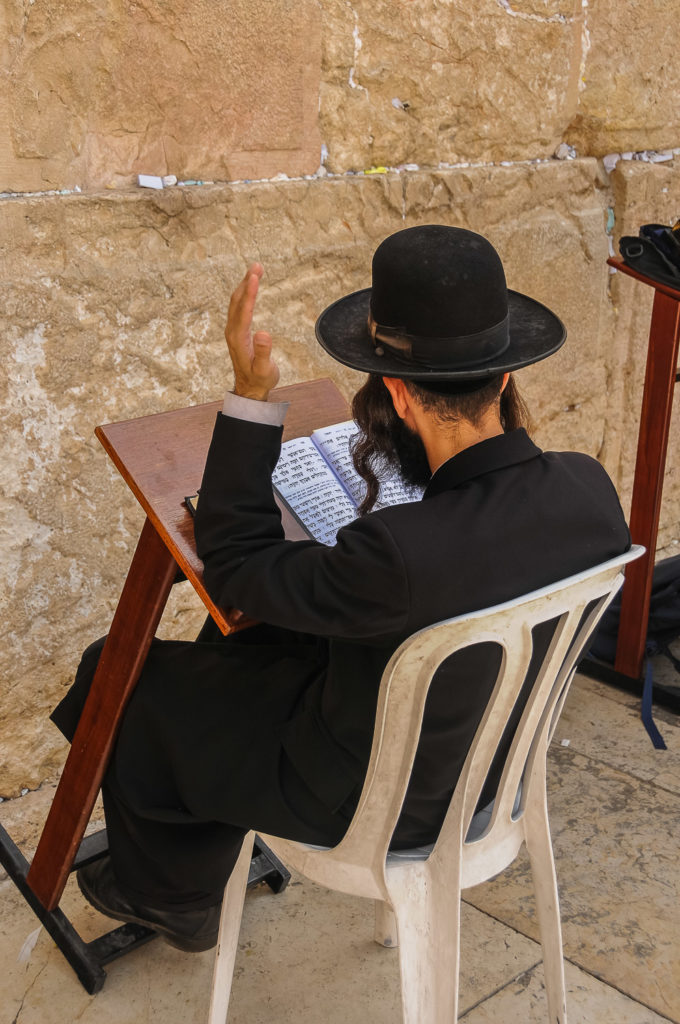
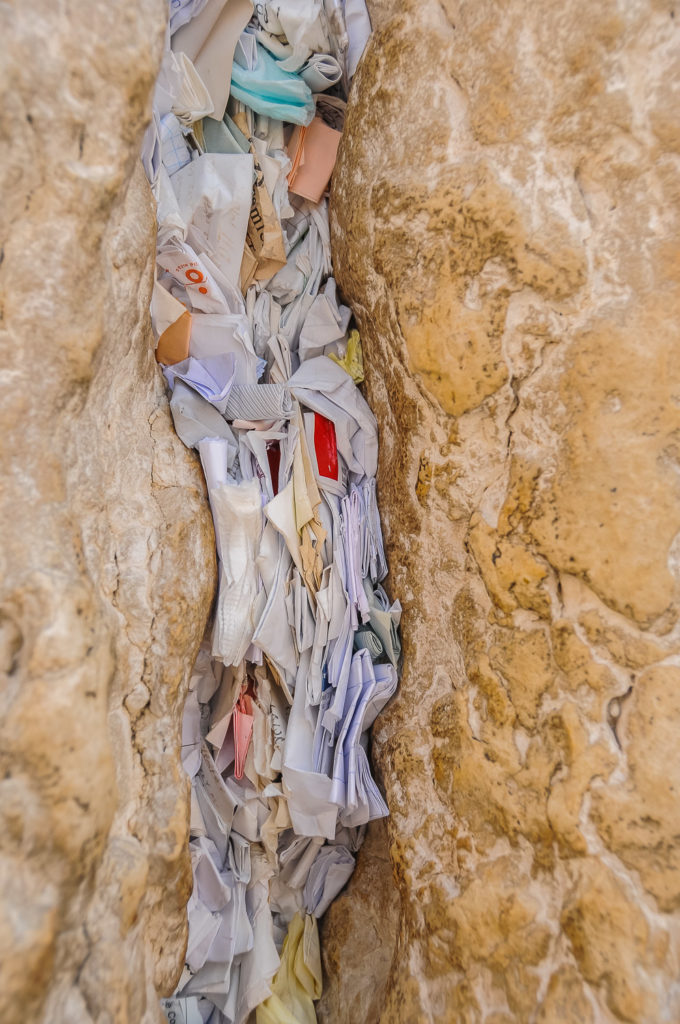
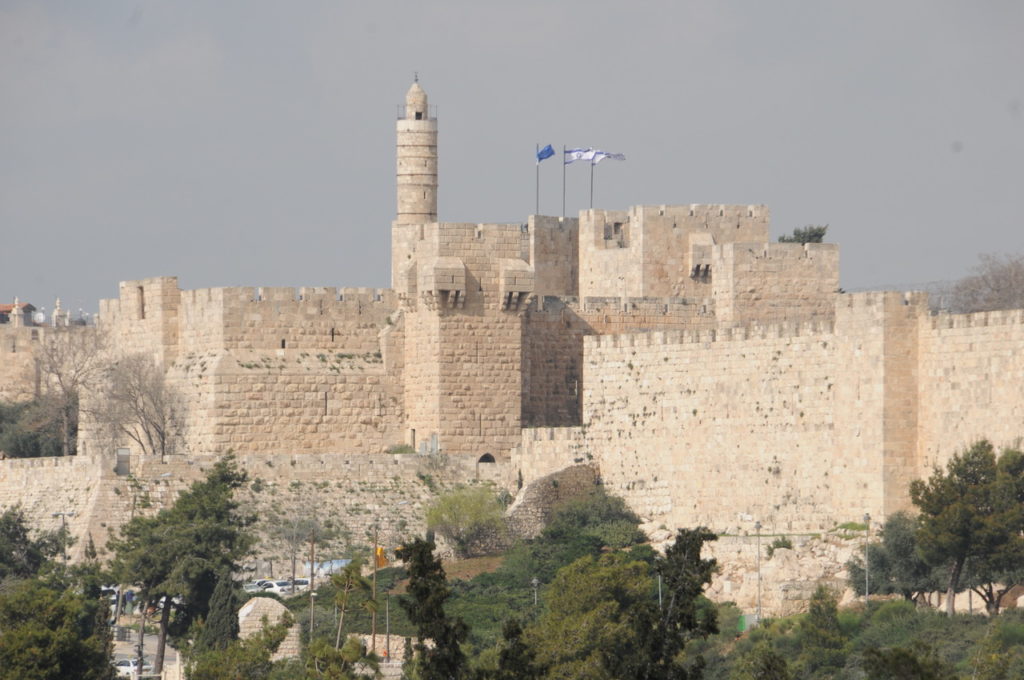

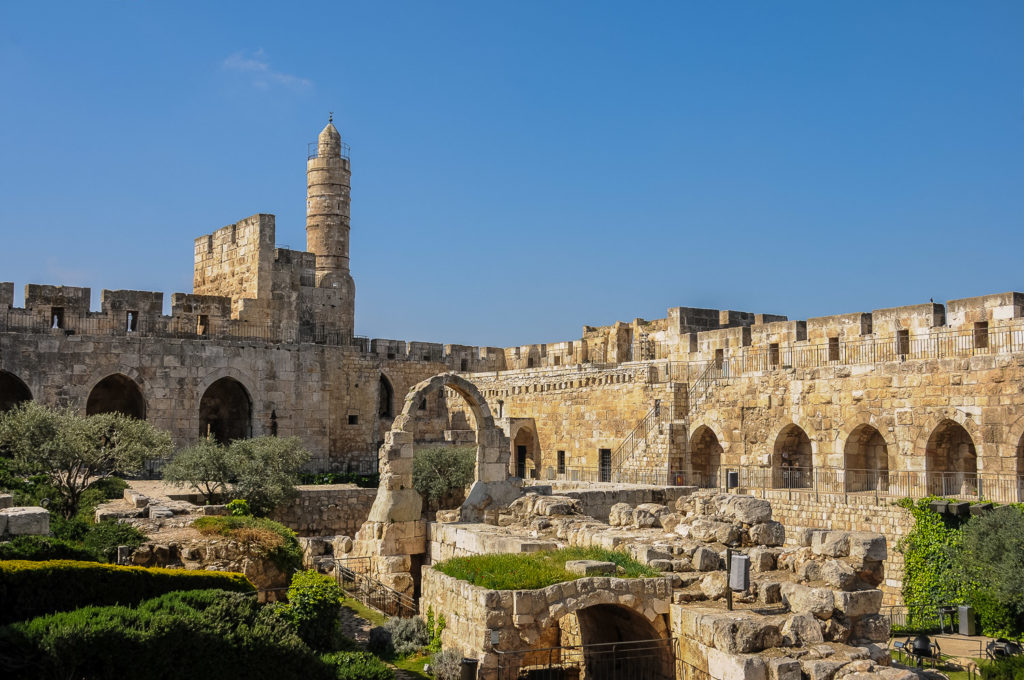
In all, a most excellent adventure. However, as my MRSA infection was getting worse, we reluctantly boarded a plane and headed for home.

